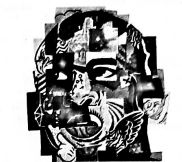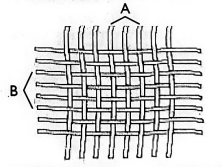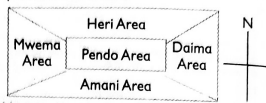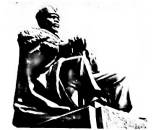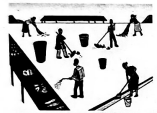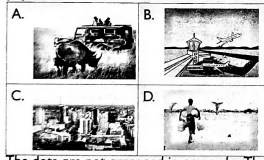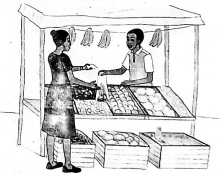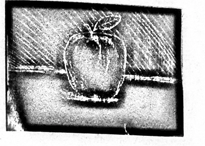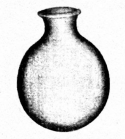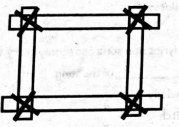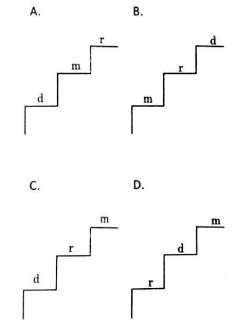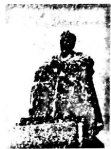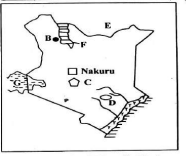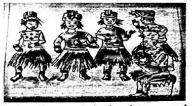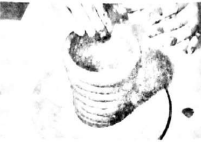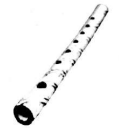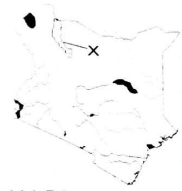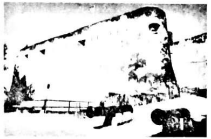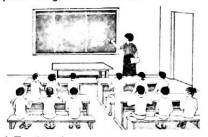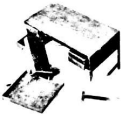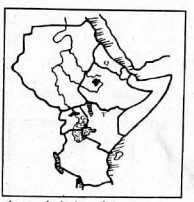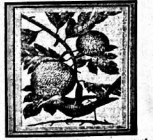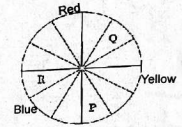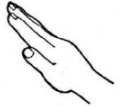Displaying items by tag: creative arts
Creative Arts, Social Studies & Religion Questions and Answers - Grade 4 Mid Term 2 Exam 2023 Set 2
SECTION 1:ART AND CRAFT.
- Which one of the following is not an element of art?
- Colour
- Texture
- Value
- Form
- Evelyn decorated her pencil drawn picture on a manila paper by smearing and rubbing. Which picture making technique did she use?
- Crayon etching
- Smudging
- Colouring
- Painting
- In a still life drawing, why are some parts of an object not seen at all?
- They are in the direction of the source of light
- They are overlapped by other objects in the composition
- They are too small to be seen
- They are black in colour
- Why is proportion important when drawing human forms?
- To achieve a realistic picture
- To create a balanced drawing
- To include all features of a human form
- To ensure some parts overlap on others
- Crayon etching is _____________________________
- using crayons to colour hand drawn pictures
- making crayons using locally sustainable materials
- applying black Indian ink on a surface covered by wax crayons
- creating pictures on a crayon waxed surface using a sharp object
- The image below was created by shading it while putting different pressures on the medium, such as a pencil or charcoal, against the drawing surface. It is called a ______________________________
- colour strip
- gradation strip
- painted strip
- shaded strip
- The picture shows a montage. Which of the following materials cannot be used as a mounting surface when creating it
- Stiff paper
- Light paper
- Cardboard
- Carton box
- The glue used to paste or mount artworks on a surface can locally be obtained from all of the following except ________________
- jacaranda tree
- eucalyptus tree
- wattle tree
- euphorbia tree
- Small animals such as buffalos, cattle and camels give us ____________________ for making leather items.
- skins
- hides
- fur
- horns
- We can obtain weaving materials from the following plants in the locality except _______________________
- Sisal plants
- Banana plants
- Coconut leaves
- Wattle trees
- The parts labeled A and B are ___________________ and ___________________ respectively
- warps and wefts
- twines and strings
- strings and fibres
- wefts and warps
- The following are examples of items that can be made by weaving except ______________
- table mats
- storage baskets
- carrier bags
- baby's clothes
- What is the name of the process of cutting long, thin straps of leather for binding leather?
- Thonging
- Stripping
- Cutting
- Shaping
- What is the meaning of the pinch technique of modeling in pottery?
- Using slabs to make a pottery item
- Using the thumb and fingers to model clay items
- Using coils to make a clay item
- Making items using clay pebbles
- Pots made using the pinch technique can be decorated in the following ways except by ___________________.
- stamping
- scratching
- incising
- beading
SECTION 2:MUSIC
- Which one of the following is a short sound?
- taa
- ta-te
- umbrella
- how
- Which syllable is higher than fa?
- re
- mi
- so
- do
- What is pitch?
- highness or lowness of sound
- the sequence of notes in music
- the fastness or slowness of music
- the highness or softness of music
- Which one of the following is not a prop?
- Drum
- Fly whisk
- Stick
- Shield
- The first three sol-fa notes are?
- m, f, s
- d, r, m
- r,m,f
- d, r, f
- Which one is not an element of dance?
- Space
- Time
- Movements
- Energy
- Which one below is not an element of music performance?
- Dynamics
- Articulation
- Pitch
- Dance
- Which sol-fa syllable is represented by the following hand sign?
- re
- mi
- fa
- do
- Melodic instruments are types of instruments that
- Produce different types of pitch
- Can be cleaned
- Do not produce different types of pitch
- Can be shared
- A person who plays a musical instrument is called _______________________
- Audience
- Instrumentalist
- A vocalist
- A soloist
SECTION 3: SOCIAL STUDIES.
- North, East, West and South are the main points of a _________________________
- Compass
- Direction
- County
- School
- Study the map below and answer the questions that follow.
Mwema Area is to the _______________________ of Pendo Area while Amani is to the ____________________ of pendo Area.- North, South
- West, South
- South, West
- East, North
- An area in a country that has its own government is known as _________________ while an administrative unit within a county is called ____________________
- Kenya, county
- Country, county
- County, sub-county
- School, children's government
- Tom and Jerry were excited to be going to the village to visit their grandparents. They saw the following beautiful things in the county. Which one of them is not a physical feature?
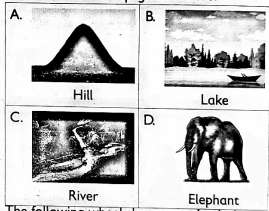
- The following wheel shows months during which different seasons are experienced in Manu's county. Study the wheel and answer the questions that follow.
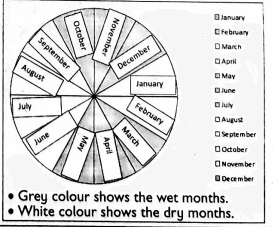
During which months does Manu's county have the rainy season?- June, July and February
- May, June, August and January
- November, March, December and April
- September and October
- The _____________________ shown below is found in ___________________City County. It reminds us of the famous person in our country.
- Cultural centre, Nakuru
- Monument, Nairobi
- Museum, Mombasa
- Monument, Kisumu
- Why are the people shown below working together?
- To take care of the environment.
- To provide security.
- To raise money to educate children.
- To provide knowledge to the learners.
- Which of the following areas is densely populated?
- The dots are not arranged in any order. The pattern of population where houses seem to be built without following any order is called______________________.
- Linear pattern
- Scattered pattern
- Clustered pattern
- Nucleated pattern
- The way of life of different communities is known as culture. Our culture can be seen through the following except.
- Food, festivities
- Dress, games and sports
- Houses, artefacts
- Water, bee hives
- Bidii Primary School wrote the following short statement about its aims and beliefs.
Hard work pays
It has the following importance to the learners except?- Guides the behaviour of learners.
- Reminds learners to be good examples to others.
- Does not remind learners what to do to perform well.
- It encourages positives values such as discipline.
- Toliani was given assignment to find out the ways of protecting resources and using them well. He found out the following ways. Which one is not correct?
- We should keep our water sources clean.
- No planting of new trees when we cut old ones.
- We should add manure and plant cover crops.
- We should keep wild animals from poachers.
- Owiro is a fisherman who lives near Lake Victoria. He sells his fish on wholesale and pays tax to the county government. Which of the following is not importance of such economic activities in the county?
- It is a source of food.
- Money from tax is used to provide street lighting.
- People pollute water.
- They provide employment to people in the county.
- Which type of trade is carried out in the picture shown below?
- Currency trade
- Modern trade
- Barter trade
- Business
- After research, Lukayo found out the following right ways of doing trade. Which of them is not true?
- Trade is carried with the set laws.
- Traders should be honest when trading.
- Goods and services of high quality should be provided.
- Traders should ask for too much money.
SECTION 4: CHRISTIAN RELIGIOUS EDUCATION.
- The following statements are true about what the Bible says on respecting our parents. Which one is not?
- It is the right thing to do
- It is the first commandment that has a promise
- Those that do so will live ling in the land D. It comes as a burden
- Which of the following statements best describes a family?
- A group of people related by blood and marriage
- People that live in the same house
- Members of a community that help each other
- A group of people that share items
- Select from the following books one that is found in the New Testament.
- Psalms
- Ruth
- Esther
- Romans
- How many books are in the Bible?
- 366
- 66
- 39
- 27
- Which of the following is not an importance of reading the Bible?
- Helps us do what is right
- Guides us on how to love God and others
- Teaches us how to revenge
- Teaches us on how to relate with others
- How many times did Balaam beat his donkey before it spoke?
- 3
- 6
- 1
- 2
- Which angel announced the birth of Jesus Christ?
- Micah
- Michael
- Raphael
- Gabriel
- God created everything on earth. This shows that God is _____________________
- God is good
- God is faithful
- God is the creator
- God is the provider
- Karen does not take care of her books. She even forgets some of her books and other personal items at school when she is going home.Which quality does Karen lack?
- Trust
- Responsibility
- Respect
- Love
- The sister to your mother is your ______________________
- Niece
- Sister-in-law
- Aunt
- Sister
SECTION 4: ISLAMIC RELIGIOUS EDUCATION.
- ______________________ was the king of Yemen who wanted to destroy the Kaabah.
- Fir-aun
- Qaarun
- Abraha
- Nimrud
- Complete the hadith: A muslim is a __________________ to another muslim.
- friend
- brother
- family
- enemy
- Which one of the following act does not indicate kindness?
- Beating a black cat
- Talking politely
- Assisting the needy
- Avoid playing loud music
- ______________________ is the pillar of Islam.
- Zakat
- Hajj
- Ramadhan
- Swalah
- Musa cheated in examination by copying from a textbook.Which hadith can be used to teach him on importance of the truth?
- Allah loves kindness in everything one does
- Allah is gentle and He loves kindness
- Tell the truth even if it is bitter
- Cursed is he who urinates or pass stool on a pathway
- Heavy najis can be removed by ____________________
- sprinkling water
- washing the affected part to remove smell and colour
- washing with warm water and soap
- washing seven times, enough to remove the najis
- Which of the following is not an example of hadathal akbar?
- stool
- heidh
- nifaas
- manii
- ______________________ means cleanliness.
- Taqwa
- Ihsan
- Iman
- Twahara
- Three of the following are reasons for Tayammum except one. Which one is it?
- Water is unavailable
- Water is harmful to the body
- Water is very cold
- Water is expensive
- It is true to say that
- things which spoil wudhu spoil tayammum
- Sleeping does not nullify wudhu
- Wudhu is washing the whole body
- Fainting does not spoil wudhu
MARKING SCHEME
ART
- A
- B
- B
- D
- D
- B
- B
- A
- A
- D
- D
- D
- A
- B
- D
MUSIC
- B
- C
- A
- A
- B
- C
- D
- C
- A
- B
SOCIAL
- A
- B
- C
- D
- C
- B
- A
- C
- D
- C
- C
- B
- C
- A
- D
C.R.E
- D
- A
- D
- B
- C
- A
- D
- C
- B
- C
I.R.E
- C
- B
- A
- A
- C
- D
- A
- D
- C
- A
Creative Arts & Social Studies Questions - Grade 4 Opener Exams Term 2 2023 Set 3
CREATIVE ARTS AND SOCIAL STUDIES
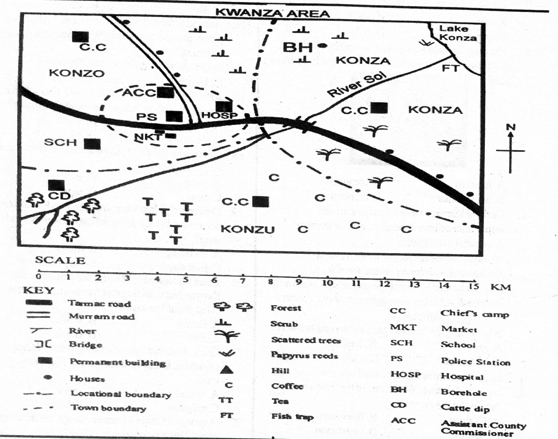
- What is the direction of the forest from lake?
- North West
- North East
- South West
- South East
- Grade four learners intended to take part in a tour around Kwanza area. Which one of the following means of transport were they likely to use?
- Railway
- Road
- Air
- Water
- River Soi flows from which direction?
- North East
- East
- North West
- South West.
- Michael was asked by his teacher to write down the settlement pattern shown in Kwanza area. Which one of the following is correct?
- Linear
- Nucleated
- Sparse
- Scattered
- Njuguna lives in the Northern part of the Kwanza area. Njuguna is likely to be a
- Christian
- Muslim
- Hindu
- Pagan.
- Grade four learners a visited a certain village. They realized that there were so many huts close together in the village. The village can be said to be populated.
- densely
- sparse
- nucleated
- uneven
- Waikiki visited her uncle during the holiday. She found her uncle in the garden harvesting Maize. The weather was likely to be
- rainy
- windy
- dry
- cold.
- The diagram below shows an example of historic built environment. The historical built environment is called
- museum
- creature
- human pillar
- monument.
- Grade 4 learners were asked to state the importance of interdependence. Four learners responded as follows;
- Jaye - Enables us get what we lack.
- Sandra-Helps us create wealth.
- Mahamat-Makes life easier and enjoyable
- Asali - Makes development of our country difficult.
Who among the learners gave the wrong answer?- Jaye
- Sandra
- Mahamat
- Asali
- Grade five learners were asked to write down as aspects of culture. Which one of the following factors did they write?
- Clothing
- Television
- Animals
- Vegetation.
- A short statement of what a school believes in is called
- core values
- school motto
- school belief
- teachers' remarks
- John was asked by his parents to write down words that can be used to describe core values they learnt in school. Which one of the following is not likely to be an example John gave?
- Discipline
- Hard work
- Misunderstanding
- Respect
- Grade four learners were asked to write examples of phrases that can be used as a motto by a newly established school. Which one of the following phrases is not likely to be used as a school motto?
- Better your best.
- strive for excellence.
- Boys are better than girls.
- Education is the key.
- Efedha was asked to write down the meaning of a school routine. Which one of the following answers did he write? A list of
- activities the school does everyday
- activities learners enjoys doing only
- school requirements
- activities done by the teachers.
- Kenya is divided into ________________________ counties.
- 45
- 49
- 40
- 47
- Abby saw the following instruments in church; drum, piano, trumpet and guitar. Which of them is played by hitting?
- Drum
- Piano
- Trumpet
- Guitar.
- Job collected the following materials: Y-stick, bottle tops, a string. Which instrument was he likely to make?
- Drum
- Shaker
- Zeze
- Toy.
- Bonny was asked to play a drum. He cannot use to play it.
- hands
- stick
- bow
- pipe.
- Different children were singing songs for various occasions. Which of the following shows a sad song?
- Wedding
- Burial
- Birthday
- Baby shower.
- Peter was asked to identify the colour on the Kenyan National flag that represents Kenyans. What should he say?
- Brown
- White
- Red
- Black.
- Grade 4 learners sang the song below. This is a song________________________
Head, shoulder, knees and toes...........- sacred
- action
- religious
- lullaby.
- A group of Grade 4 learners sang a certain song in turns. This type of song is called
- patriotic
- folk
- round
- choral.
- One Monday morning scouts sung this line of the National Anthem......Build this our Nation together. This is likely to be found in the ___________________ verse
- 2nd
- 1st
- 4th
- 3rd
- Tom played a guitar while singing his favourite song. Which type of instrument is this?
- Wind
- String
- Violin
- Percussion.
- These pupils sung the National Anthem while behaving differently. Who displayed good behaviour?
- Ben-Laughing loudly.
- Ken-Talking to a friend.
- Liam-Standing at ease.
- Jean-Standing at attention.
- Jaren was planning to create a photo montage on digital devices. Which one of the following materials was he not likely to use?
- News paper
- Crayon
- Adhesive
- Magazine
- Jackline was making a basket using plant materials. Which one of the following was likely to use?
- Bamboo
- Acrylic yarn
- Sisal fibre
- Carbon fibre
Peter displayed the artwork shown below. Use it to answer questions 28 to 31.
- Name the elements of art used.
- Shapes
- Colour
- Shading
- Lines
- Name the technique used to create the above artwork.
- Crayon etching
- Smudge technique
- Painting
- Gradation.
- Which of the following groups consists of materials used to create the above artwork?
- Crayons, painting, adhesive.
- Charcoal, black Indian ink, Crayons.
- Paper cut outs, adhesives, paint.
- Crayons, soap, black Indian ink.
- Which one of the following explains why Peter dried the prepared surface under a shade?
- For the surface to dry slowly.
- For the surface to dry well.
- To prevent the wax from melting.
- To make the colour bright.
- Grace visited a local art workshop over the holiday break. Which of the following basketry item was she not likely to see at the artwork shop?
- Woven door mat.
- Earthen Pot.
- Woven scarfs.
- Fishing basket
- During a fun day at Halim academy, pupils participated in a painting competition. Which of the following tools and materials were they not likely to have used?
- Water colours
- Paint brush
- Crayons
- Pallette
Mutiso prepared the figure below. Use it to answer questions 34 to 36.
- Name the figure displayed above.
- Staggered variation strip.
- Gradation strip.
- Value.
- Blended variation strip.
- Which of the following is not a dry media that he could use to create the displayed figure?
- Paint
- Charcoal
- Graphite pencil
- Coloured Chalk.
(PART 2: Choose a section you have prepared for. Each section is 15 marks)
CHRISTIAN RELIGIOUS EDUCATION
- Grade four learners were revising and came across this words "Human beings were created in the image and likeness of God". According to these words, who is the creator?
- Human beings
- God
- Jesus
- Father
- The following are feelings of bad thoughts and good thoughts. Which one amongst them is a bad thought?
- Going to my neighbours house and play until late in the evening.
- Saying a prayer before going to bed.
- Finishing my homework before dinner
- Singing gospel songs.
- "May you always be joyful in your union with the Lord again I say rejoice"
The above verse is found in which book of the Bible?- Ephesians 6
- Philippians 4:4
- Genesis 3
- Exodus 2
- Getting emotional and angry sometimes is normal. According to Ephesians 4: 26, controlling your anger will help you stay away from
- happiness
- God
- friends
- sin.
- The following are unique abilities that makes one a unique creation of God. Which one is not?
- Honesty
- Politeness
- Irresponsible
- Kindness
- Peter was asked to name his family members. Who among the family members named below is not part of a nuclear family?
- Father
- Children
- Grandfather
- Mother
- According to 2 Samuel 13:4-14 about the story of Amnon and Tamar, the Bible teaches us that we should not misuse our bodies because our bodies are the temple of
- Holy spirit
- Jesus
- parents
- blood.
- In the Old Testament books, we have the first five books which are known as the law books. Which of the following is not one of them?
- Mathew
- Exodus
- Genesis
- Numbers
- The following are the attributes of God according to the accounts of creation. Which one is not?
- God is loving.
- God is Holy.
- God is the sole creator.
- God is a sinner.
- Which group below contains books from the Old Testament only?
- Genesis, Numbers, Acts.
- Mathew, Luke, Mark, Leviticus.
- Exodus, Isaiah, Psalms.
- Genesis, Mark, Luke.
- Mr Jimnah taught grade four learners to be very careful when relating with others and they can trust all these people when in danger except
- teachers
- parents
- strangers
- guardians.
- In the Bible, there is a man who is referred to as the father of faith. Who was he?
- Abraham
- Jesus
- Moses
- Aaron
- Which miracle shows that Jesus was a universal saviour?
- Healing of the Roman officer's servant.
- Raising of Lazarus.
- Changing water into wine.
- Healing the blind man.
- Learners in grade 4 were asked to recite a memory verse from the book of Numbers 22:1-12 about the man who disobeyed God. Who was this man?
- Balaam
- Samson
- Saul
- Moses
- Who among the following were the first disciples to be called by Jesus?
- Philip and Thaddeus.
- John and Peter.
- Peter and Andrew.
- John and James.
ISLAMIC RELIGIOUS EDUCATION
- The mother of prophet Muhammad (SAW) was called
- Khadija
- Amina
- Zulekha
- Asiya
- Surah Fatiha has ______________ verses.
- 6
- 10
- 7
- 4
- The word Ikhlas means
- purity
- good
- excellent
- bad
- ___________________________ is the book associated with the month of Ramadhan.
- Quran
- Taurat
- Injeel
- Zabur
- _______________________ is Haram for Muslims to eat.
- Camel
- Goat
- Pig
- Cow
- The angel in charge of paradise is called
- Malik
- Ridhwan
- Izrael.
- Mikael
- Associating Allah with partnership is _______________________
- saum
- ibadaa
- salat
- shirk
- Qadar means
- provider
- opener
- powerful
- strong
- Eidul-hajj is also known as Eidul
- Mubarak
- Fitr
- Adhha
- Diwali
- ________________ and ____________________ are sons of prophet Mohammad (SAW).
- Ali and Abubakar
- Abdallah and Kassim
- Umar and Athman
- Jibril and Mikael
- Prophet Mohammad (SAW) received the first wahy in cave
- Thaur
- Hira
- Uhud.
- Marwa.
- Bowing down for prayer is called
- Rukuu
- Wudhu
- Sujud.
- salam
- After fasting, Muslims break their fast using
- soda
- cigarettes
- honey
- dates and water.
- Which angel of Allah will blow the trumpet at the end of the world?
- Mikael
- Jibril
- Israfil
- Israel
- The first wife of the prophet Muhammad (saw) was
- Aisha
- Zainab
- Khadija
- Maria
Creative Arts And Social Studies Questions and Answers - Grade 4 Opener Exams Term 2 2023 Set 2
ART AND CRAFT
- Which one of the following statements correctly gives the meaning of still life drawing?
- Is the lightness and darkness of colour
- It involves rubbing a colour on a paper
- It involves drawing arrangement of non- moving objects
- It involves creating light and dark effect and colour
- The lightness and darkness of a colour is called
- texture
- painting
- tone
- smudging
- Which one of the following materials cannot be used to shade a picture
- charcoal.
- pencil
- crayons
- stone
- Drawing objects while looking at them is called
- drawing from memory
- still life drawing
- drawing from imagination
- drawing from observation
- Which one of the following is not a product of a leather work?
- Wallet
- Manilla paper
- Drum
- Shoes
- The technique used in the picture below is called
- painting
- thonging
- basketry
- weaving
- Which one of the following materials can be used to stick a picture on a piece of paper?
- Glue
- Paint
- Brush
- Soi
- The technique used to draw the pot below is called
- smudge technique
- texture
- crayon etching
- still-life drawing
- Grass in the field is always ________________________________ in colour.
- blue
- green
- red
- white
- What happens when a white colour is added to another colour?
- Becomes lightened
- Becomes darker
- Becomes yellow
- Becomes colourless
MUSIC
- Songs that are sung to show love for our county are known as
- action songs
- patriotic songs
- religious songs
- topical songs
- We __________________ a descant recorder to produce sound.
- hit
- blow
- shake
- pluck
- "Tushangilie Kenya, Taifa letu tukufu... " is an example of ______________________ song.
- patriotic
- religious
- action
- topical
- Complete this line of the Kenya National Anthem. "Let one and all ____________________________________
A. creation
C. endever
B. arise
D. defend - The diagram below shows a musical instrument it is played by
- plucking
- blowing
- beating
- stringing
- The person who leads a song during a performance is known as
- soloist
- dancer
- leader
- performer
- The part of drum used for making the sound louder is known as
- skin
- resonator
- laces
- foot
- When singing with expressions, the volume of a song is known as
- tempo
- dynamics
- articulation
- pitch
- Clothes worn when performing folk song is called
- props
- costumes
- gameskirts
- uniform
- When one person sings a song it is referred to as
- choral singing
- duet
- solo singing.
- trio singing
SOCIAL STUDIES
- The Nairobi National Museum is a historic monument. It is an example of a
- built environment
- physical environment
- natural environment
- relief environment
- Four Grade 4 learners wrote down examples of culture among their communities. Who wrote the wrong culture
- Fatuma - Songs
- Ndoto - Dressing
- Ogawa - nHousing
- Cherop - Money
- People in our county carry out economic activities to create wealth. Which one of the following is not a benefit of these economic activities?
- Creation of income
- Government gets taxes
- People become famous
- There is creation of jobs
- Below are diagrams showing population distribution. Which diagram shows dense population.
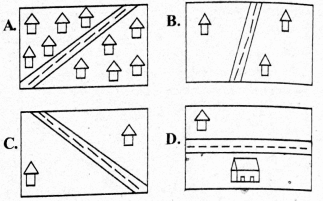
- At the door of the head teacher of Uzalendo School there is a board with descriptions of the school. Which one of the following is not likely to be found on the board?
- The year the school started"
- The name of the owner of the school
- Results of national examinations
- Names of past and current head teachers
- Who among the following people is involved in illegal business?
- Magosi - transports vegetables
- Farida - has a bookshop
- Kulet - makes dresses
- Matawi - sells changa'a
- The diagram below shows a farming activity
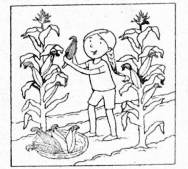
The activity shown above is carried out when the weather is- dry
- wet
- rainy
- stormy
- Kadzo was walking to school and the sun had just risen. Her shadow was pointing towards West. She was facing
- North
- South
- East
- West
- Some cultural practices are harmful to the society. Which one of the following is forbidden by the government?
- Singing traditional songs
- Eating homegrown foods
- Wearing traditional clothes
- Female circumcision
- Grade 4 learners of Kilele School visited a bread making industry near their school. Which raw material were they likely to find at the industry?
- Wheat
- Maize
- Sugarcane
- Cotton
- Large population is found in towns in our county due to
- availability of fertile soils
- availability of high rainfall
- availability of jobs
- presence of good roads
- Three of the following are ways in which people depend on one another. Which one is not?
- Buying goods from one another
- People fight one another
- People exchange cultural practices
- People intermarry
- Which one of the following statements CORRECTLY describes a plateau?
- Large flat land that is raised
- Large area of water
- Valley sorrounded by steep slopes
- Low area of land between mountains
- Which one of the following diagram shows a cultural artefact?
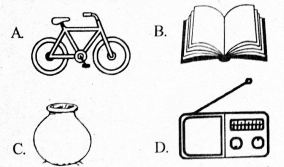
- Areas in our county that have sparse population are likely to have
- large towns
- many industries
- low rainfall
- flat land
PART 11
CHRISTIAN RELIGIOUS EDUCATION
- Four grade 4 learners wrote on cards some Christians values learnt in school. Who wrote the wrong value?
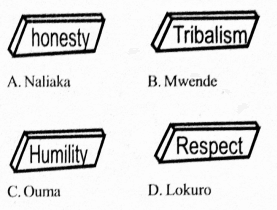
- When God first called Abraham he was living in
- Canaan
- Midian
- Moab
- Haran
- Which one of the following parables of Jesus teaches Christians to forgive one another?
- The mustard seed
- The widow and the judge
- The lost son
- The friend at midnight
- Amos a grade 4 learner was asked by his teacher to recite the first verse of the Lords prayer. The correct verse is
- "Our father who art in heaven"
- "Give us our daily bread"
- "Forgive us our sins"
- "Thy will be done on earth"
- Children are advised to obey their parents because
- their parents love them
- it is God's command
- their parents pay their school fees
- they set good examples
- When Jesus was born his parents had gone to register in
- Nazareth
- Jerusalem
- Bethlehem
- Jericho
- Which one of the following is a fruit of the Holy Spirit?
- Wisdom
- Faith
- Preaching
- Patience
- Zaccheaus who invited Jesus to his house worked as a
- priests
- tax collector
- shepherd
- fishermen
- The brothers of Joseph sold him as a slave because
- they hated him
- he was a strong man
- slaves were needed in Egypt
- they wanted to get money
- Who among the following learners demonstrates the value of responsibility?
- Samuel - goes to school late
- Anna - sweeps the home compound
- Miriam - steal other learners' pens
- Jacob - does not share his textbook
- The man who was beaten by robbers was helped by
- a Levite
- an Ethiopian
- a Samaritan
- a priest
- From the miracle of the healing of the ten lepers Christians learn to be
- thankful
- kind
- obedient
- patient
- Samson was a great man in Israel God had blessed him with great
- education
- wisdom
- wealth
- strength
- When Nicodemus went to Jesus at night he was told to
- sell all his property
- help the poor
- be born again
- pray without getting tired
- The donkey that spoke belonged to
- Balaam
- Balak
- Abraham
- Jacob
PART 11
ISLAMIC RELIGIOUS EDUCATION
- The Surah which is called the opening is?
- Nas
- Nasr
- Ikhlas
- Fatiha
- Which is the first verse of Surah Al-Fatiha
- Alhamdulillah rabbil Alamin
- Maalik Yaumid diin
- Bismillahir Rahmanir Rahim
- Qui Audhubi Rabbin naas
- Which surah was revealed during the conquest of Makkah?
- Nas
- Nasr
- Kaafirun
- Maun
- We are protected from the evils of Jinns and mankind when we recite the Surah?
- Nas
- Falaq
- Fatiha
- Ikhlas
- A person who never keeps their promises and lies is known as a ?
- Mumin
- Imam
- Manafiq
- Shariif
- Grade four learners discussed about the fardh acts of Wudhu, among the four learners who gave out the correct number of the compulsory acts?
- Aisha - 3
- Ali - 5
- Sumayyah - 6
- Khalid -4
- The attribute of "Allah Al-Basir" means?
- all hearing
- all seeing
- all knowing
- the one
- The food which we eat after fasting during the month of Ramadhan is called
- Iftar
- Suhur
- Walima
- Nikah
- Which is the first month in the Islam calender?
- Swafwar
- Muharram
- Ramadhan
- Dhul Hijjara
- The sayings of prophet Muhammad (S.A.W) according to Islam are called?
- Hadith
- Sunnah
- Kalimah
- Halaal
- Which of the following acts nullifies Wudhu
- Eating
- Sleeping
- Playing
- Drinking
- The uncle of the prophet who was mentioned in Surah Masad was?
- Abu twalib
- Abu Lahab
- Abdul Lizza
- Abbas
- How many daughters did the prophet had?
- 4
- 7
- 6
- 5
- Which is the direction of Al-Kaabah in Kenya?
- South
- East
- North
- West
- We can show kindness of Allah creatures by
- Beating animals
- Watering animals
- Not treating them
- Being unkind to them
MARKING SCHEME
ART/CRAFT
- C
- C
- D
- D
- B
- B
- A
- A
- B
- A
MUSIC
- B
- B
- A
- B
- B
- A
- B
- B
- B
- C
SOCIAL
- A
- D
- C
- A
- B
- D
- A
- C
- D
- A
- C
- B
- A
- C
- C
C.R.E
- B
- D
- C
- A
- B
- C
- D
- B
- A
- B
- C
- A
- D
- C
- A
I.R.E
- D
- C
- B
- A
- C
- D
- B
- A
- B
- A
- B
- B
- A
- C
- B
Creative Arts, Social Studies & Religion Questions and Answers - Grade 6 Opener Exams Term 2 2023 Set 1
QUESTIONS
SECTION 1:ART AND CRAFT.
- The following are factors to consider when drawing forms except.
- size
- balance
- proportion
- space
Use the following picture to answer questions 2 and 3.

- The shading technique shown in the picture is called
- stippling
- smudging
- cross hatching
- crayon etching
- How can one create dark effect on a form when shading as shown in the picture!
- By using many dots
- By evenly spacing the dots
- By using fewer dots
- By not using dots at all
- What is imaginative drawing?
- Drawing an object you have not seen before
- Drawing an object from memory
- Drawing an object from observation
- Drawing a still life object
- What is the other name for tertiary colours?
- Intermediate colours
- Mixed colours
- Compound colours
- Complementary colours
- How are different tones in a painting created?
- Using the same colour of paint uniformly
- Varying the shades of paint between dark and light
- Applying different types of paint in a drawing
- Using different colours to decorate an artwork
- One can create a montage composition based on the theme of wild animals for self-expression using pictures obtained from the following sources except
- old magazines
- newspapers
- calendars
- new books
- Which one of the following is not a factor to consider when making items using the coil technique?
- Uniformity of coils
- Craftsmanship
- Consistent tension
- Colour
- Large animals such as buffalos, cattle and camels give us ......................... for making leather items.
- hair
- hides
- horns
- hooves
- Using coloured beads to make an item more colourful and attractive is called
- gluing and stitching technique
- coil technique
- thonging technique
- beading technique
- Which of the following line patterns is not used to decorate leather items?
- Zig zag pattern
- Wavy pattern
- Straight pattern
- Oval pattern
- Which one of the following is not a technique used in pottery?
- Coil technique
- Slab technique
- Carving technique
- Pinch technique
- Clay glue used to stick slabs together is called
- grog
- mud
- slip
- adhesive
- Modelled clay items can be decorated by
- embedding and piercing
- beading and incising
- embossing and embellishing
- texturing and smoothing
- Which one of the above is correctly matched with the name?
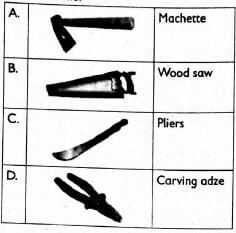
SECTION 2:MUSIC
- The moment of silence in music is called
- Semibreve.
- rest
- Sol-fa.
- Harmony
- What is structure in music?
- The highness or lowness of the music.
- Put something together.
- A series of notes played in an order that is memorable.
- The arrangement and order of the sections of the music.
- Which notes are found in the scale of C major?
- G-A-B-C-D-E-F-G
- C-E-F-G-A-B-G-C
- C-E-F-G-A-B-F-C
- C-D-E-F-G-A-B-C
- The following are instruments matched with the community it originates from. Which one is not correct?
Instrument Community- Wandindi Kikuyu
- Adeudeu Kisii
- Orutu Luo
- Shiriri Luhya
- Which of the following has a note symbol?

- What is an Art song?
- A song normally played during an art lesson.
- A Western song usually written for one voice with piano accompaniment.
- Sacred composition intended for worship.
- A song sung when looking at a piece of Art.
- What is the rest symbol for a dotted minim?

- What is the name of the following note d
- Minim
- Semibreve
- Dotted minim
- Quaver
- Which of the following is a rest symbol?

- Controlling your breath during singing of a phrase in music is called
- .Articulation
- Phrasing
- Singing
- Punctuation
SECTION 3: SOCIAL STUDIES.
- The following are landlocked countries.
Which one is not correct?- Burundi
- Ethiopia
- Uganda
- Kenya
Study the map below and answer the questions 27 and 28.
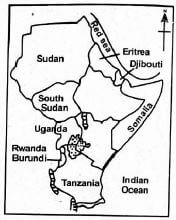
- Describe the position of Djibouti in relation to the neighbouring countries.
- It neighbours Ethiopia to the West and Eritrea to the North.
- It neighbours Indian Ocean to the East.
- It neighbours Uganda to the South.
- It neighbours Sudan to the East.
- Describe the position of Somalia in relation to the neighbouring water body
- Neighbours Ethiopia to the West and Eritrea to the North.
- Neighbours Indian Ocean to the East.
- Neighbours Lake Victoria to the South.
- Neighbours River Nile to the East.
- Kitharimo was asked to state the differences between the latitudes and longitudes. He wrote the following information. Which one is not correct?
- Longitudes run from North to South.
- Latitudes run from West to East.
- Longitudes influence time.
- Latitudes do not influence time.
- Study the map below and describe the position of Eastern Africa longitudes and latitudes.
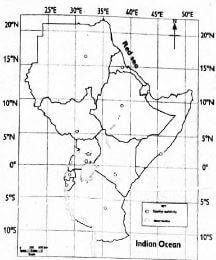
- Latitudes 23° N and 12° S, longitudes 22° E and 51° E.
- Latitudes 13° N and 12° E, longitudes 12o E and 41° E.
- Latitudes 33° N and 42° E, longitudes 32° E and 61° E.
- Latitudes 13° N and 22° E, longitudes 12o E and 51° E.
- The following are ways of supporting unity of Eastern Africa. Which one is not true?
- Supporting the East African Community
- Singing patriotic songs about EAC.
- Speaking Kiswahili.
- Closing borders.
- Munyaka listed the following reasons why some lakes in the Rift Valley are salty. Which one is not correct?
- They do not have an outlet.
- They experience high rate of evaporation.
- They do not evaporate.
- They have salty underlying rocks.
Study the feature follow and answer question 33.
- What is the name of the main physical feature formed through the process shown above?
- Block mountain
- Tarn lake
- Volcano mountain
- Rift Valley
- Eastern Africa has only two lakes that are formed through down warping. Which of the following is true!
- Magadi and Albert
- Lake Tana and Kivu
- Lake Victoria and Kyoga
- Lake Rukwa and Eyasi
- Maggie researched on ways in which desert and semi desert climate influence human activities. She listed the following activities. Which of them is not correct?
- Tourism
- Poor human settlement
- Pastoralism
- Paper manufacturing.
- Study the diagram below and answer question that follows.
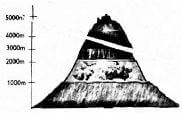
Which type of vegetation is shown above!- Swamp vegetation
- Savannah vegetation
- Equatorial vegetation
- Mountain vegetation
- Kathomi listed the following historical buildings that are found in Eastern Africa. Which one is not correct?
- Kabaka Royal Palace
- St Mary's Cathedral- Rubanga
- Early Christian Church-Ethiopia
- Meroe pyramids
- Which of the following communities are Western Bantus?
- Abaluhya, Abasuba
- Wataita, Pokomo
- Agikuyu,Ameru
- Mijikenda, Aembu
- How does HIV/AIDS influence population distribution?
- It increases population in a given area.
- It lowers population in a given area.
- It reduces dependence ratio.
- It increases fertility rate.
- Muthoni visits her grandparents during holiday. She assists them in doing household chores. Which aspect of traditional culture does she promote!
- Traditional foods.
- Upholding moral values.
- Use of elders to settle disputes.
- Respect for human life and taking care of the old.
SECTION 4: CHRISTIAN RELIGIOUS EDUCATION.
- Philip and Jenny wanted to be united in marriage. They visited a County Commissioner's Office. There was a government official who helped them to carry out the process. Soon after, they signed the marriage certificate. They had two witnesses. Which type of marriage did Philip and Jenny carry out?
- Civil marriage
- Cultural marriage
- Traditional marriage
- Religious marriage
- Which one of the following children needs to develop a better talent?
Alison says, 'My talent is drawing.
Jackson says, Muent is playing chess!
Miranda says, My talent is sleeping!
Derek says, 'My talent is drawing pictures!- Alison
- Derek
- Jackson
- Miranda
- What do we learn from the King's daughter who rescued Moses?
- A family should not take care of their children
- We should put small babies in the river
- God always protects people from danger
- Our elder sisters should bully us
- Which of the following shows qualities of a false god?
- He answers prayers
- He is a provider
- He is powerful
- He does not listen to our prayers
- Which was the original language used to write the Bible?
- English
- Kiswahili
- Hebrew
- Greek
- Which of these is not a value taught by the King Pharaoh's daughter act of rescuing baby Moses?
- Hatred
- Compassion
- Kindness
- Responsibility
- Which of these skills is not gained from the Ten Commandments?
- Assertiveness
- Self-control
- Irresponsibility
- Decision making
- How many prophets of Baal were at the contest on mount Caramel?
- 300
- 450
- 200
- 100
- God's power helped Samson to defeat
- The Philistines
- The Galatians
- The Israelites
- The Egyptians
- King Belshazzar helps Christians to realise that
- God does not bless humble people
- A humble person never apologises to his friends
- Proud people give good services to the community
- Humility helps people to relate well with others
SECTION 4: ISLAMIC RELIGIOUS EDUCATION.
- The sunnah prayer said before fardh prayers are known as
- Baadiya
- Witr
- Qabliya
- Dhuha
- The angel of Allah who's responsible for revelation (Wahyi) is
- Mikael
- Izrael
- Israfeel
- Jibril
- Which one of the following prophets of Allah (SWT) was given the Injeel
- Issa
- Musa
- Daud
- Mohammed
- Taqwa means
- Praising Allah
- Enjoying good
- Fear of Allah
- Reliance on Allah
- The belief in the last day is one of the pillars of
- Islam
- Iman
- Ihsan
- Salat
- Which was the first battle fought by Muslims?
- Badr
- Uhud
- Khandaq
- Hunain
- When a Muslim sneezes it is good for him or her to say
- Subhanallah
- Yarahamkallah
- Alahamdulillah
- Yabii
- How did the prophet (SAW) treat the Prisoners of war?
- Harshly
- Roughly
- Kindly
- Carelessly
- The first rite performed for a newborn baby is
- Aqiqah
- Adhan
- Naming
- Circumcision
- According to the hadith of the prophet (PBUH) a sign of a hypocrite is
- Betraying of trust
- Having doubts in Allah (SWT)
- Performing acts of worship
- Neglecting swala
MARKING SCHEME

Creative Arts and Social Studies Questions and Answers - Grade 5 End Term 1 Exams 2023 Set 4
ART AND CRAFT
- The following are examples of still life objects. Which one is not?
- Gourds
- Human beings
- Cars
- Utensils
- Which one of the following objects always has a regular shape?
- Tree
- Leaf
- Circle
- Stone
- The diagram below shows a frame loom.
It is used to- model pots
- weave a mat
- create a picture using montagetechnique
- mix colours
- The picture below is a block print that was done by a grade 4 learner. How many motifs are in the image below?
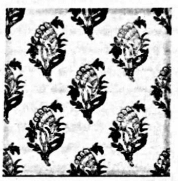
- 13
- 5
- 1
- 2
- A modelling technique that involvesshaping containers by pressing on thewalls using thumbs and forefingers is known as
- coil technique
- wheel technique
- slab technique
- pinch technique
- A grade 5 learner made a basketusing twining technique and placed it on the wall of her bedroom for everyone to see her beautiful work.What was the purpose of the basketthat she made?
- For decorative purposes
- For storing grains
- For storing clothes
- For fetching water
- Ann was mixing colours for a tie and dye. She mixed yellow and green. What colour did she get after mixing the two colours?
- Violet
- Yellow green
- Orange
- Purple
- Why is it necessary to melt wax in a double container?
- To control temperature so that the wax cannot burn
- To avoid spilling of the wax
- To hold the wax in place
- To mould the wax into a crayon
- Which is the most suitable adhesive to use when sticking cotton on a manila surface while creating a collage?
- Hot glue
- Cellotape
- Wood glue
- Office glue
- Which of the following is a type of line?
- Thick line
- Thin line
- Zigzag line
- Short line
MUSIC
- The following include percussion instruments only. Which does not?
A. Tambourine and kayamba
B. Drum and tambourine
C. Horn and shakers
D. Shakers and kayamba - Songs we sing as we imitate common actions can be referred to as ______________________
- action songs
- patriotic songs
- sacred songs
- lullaby songs
- The lyrics of a song commonly carry the ______________________ of the song.
- melody
- pitch
- rhythm
- message
- Verse two of the Kenya national anthem starts with the words______________________
- Let one and all arise
- Let all with one accord
- Fill every heart with thanks giving
- Oh God of all creation
- The difference in between two notes can be described as either low or high.
- rhythm
- pitch
- articulation
- music
- Which one of the following solfa notations are correctly arranged on the solfa ladder in ascending order?
- An example of a wind instrument that cannot play a tune is the ________________________
- African horn
- trumpet
- descant recorder
- flute
- When singing a round song, participants should do all the following except
- keep to their part
- come into the song at different times
- complete the song in groups as they started
- stand at attention
- In singing a lullaby, the singer would usually sing _______________________
- fast and softly
- softly and slowly
- loudly and excitedly
- loudly and fast
- The second verse of the East African anthem ends with the words
- Mila zetu na desturi zetu
- Tujitoe kwa hali na mali
- Tutimize na malengo yetu
- Tuijenge jumuiya bora
SOCIAL STUDIES
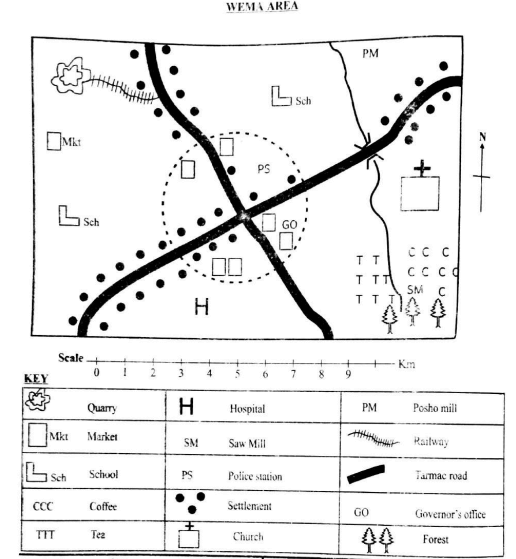
Study the map of Wema area and answerquestions 21-25
- Mimmy walked from the forest to the quarry in Wema area. Which direction. was he walking from?
- South East
- South West
- North West
- North East
- The main means of transport in Wema area is
- air
- railway
- road
- water
- Grade five learners were asked to statethe economic activities taking place in Wema area. Who gave a wrong answer?
- Moraa - Farming
- Wanjiku - Trading
- Otieno - Lumbering
- Wafula - Fishing
- The population distribution in Wema area can be desribed as
- clustered
- linear
- sparsed
- scattered
- The elected head of Wema area is a
- senator
- chief
- governor
- president
- Grade 5 Social Studies teacher asked learners in grade 5 to name the element of a map used to find distance in a map. Who among them gave the correct answer?
- Linet - Key
- Bill - Scale
- Rita - Title
- Collins - Frame
- Identify a drainage feature among the following features
- Mountain
- Hill
- Plateau
- River
- Government officials who represent Kenya in other countries are known as
- judges
- governors
- senators
- ambassadors
- During a Social Studies lesson, the teacher gave the following characteristics and asked them to identify the climatic region.
- Experienced in high mountains
- Experiences cool and wet conditions
- Experiences high rainfall between 1250mm - 2200mm per year.
- Experiences low temperature ranging between 0°c - 15°c
The climatic region described above is- desert climate
- modified tropical climate
- mountain climate
- tropical climate
- While on educational tour, learners of grade 5 at Bora primary school came across the feature below. This was an example of a
- museum
- monument
- cultural center
- historic building
- Identify the Nilotes among the communities below
- Abaluhya
- Borana
- Nandi
- Indians
Use the map of Kenya to answer questions 32-34
- The mountain marked T is
- Mt. Kilimanjaro
- Mount Kenya
- Mt. Elgon
- Mt. Marsabit
- The country that borders Kenya to the North West marked W is
- Sudan
- Uganda
- South Sudan
- Ethiopia
- The river marked S is called
- River Ewaso Nyiro
- River Tana
- River Athi
- River Mara
- African traditional education was done through the following methods except
- songs
- riddles
- proverbs
- seminars
C.R.E
- The parable of the three servants in Matthew 25:14-30 teaches Christians to
- use their talents well
- help those in need of help
- bring back people to the church
- humble themselves in their prayer
- Which one of the following responsibilities was given to human beings by God in the garden of Eden?
- Offer animal sacrifices
- Cultivate and guard the garden
- Eat all the fruits in the garden
- Make clothes
- Learners of grade 5 in Kina primary school were asked to name causes of child labour. Who gave the wrong answer?
- Margaret - Poverty
- Rose - Loss of parents
- Denis - Higher education
- Moses - Drug abuse
- Who among the following disciples of Jesus worked as a tax collector before being called?
- Peter
- Judas Iscariot
- Matthew
- Andrew
- Who among the following was sent by the king of Moab to curse the Israelites?
- Balak
- Balaam
- Joshua
- Caleb
- Three of the following are values acquired when using the Bible. Which one is not?
- Unity
- Humility
- Patriotism
- Nepotism
- According to Acts 4:1-5, Peter and John were arrested because
- they healed a lame man
- they were preaching about the resurrection of Christ
- they baptized people in Jesus' name
- they refused to pay taxes
- Which gift of the Holy spirit did King Solomon use to solve the case of the two women who were claiming ownership of one child?
- Healing
- Faith
- Wisdom
- Love
- Who among the sons of Noah lacked respect for his father?
- Shem
- Ham
- Japheth
- Seth
- The golden and silver vessels which King Belshazzar and his wives drunk from were taken from the temple in
- Judea
- Jerusalem
- Midian
- Bethlehem
- Prophet Elijah challenged the prophets of Baal on mount
- Sinai
- Carmel
- Moriah
- Horeb
- What was Moses doing when he saw the burning bush?
- Leading the Israelites from Egypt
- Taking care of his father-in-law's sheep
- Receiving the ten commandments
- Offering a sacrifice to God
- Joseph a grade 5 boy found two grade one boys arguing over a book. The best action for him to take was
- take the book from them
- listen to them and solve the problem
- take the book and give one of them
- report them to the class teacher
- Which one of the following is not a talent?
- Singing
- Drawing
- Dancing
- Conning
- Three of the following are fruits of the Holy spirit except
- faithfulness
- love
- faith
- humility
I.R.E
- While perfoming Swalatul subh, Shukra Grade 5 learner forgot to recite surah Al-Fatiha. What do you think happened to her swalat?
- It was not accepted
- It was accepted
- It was okay
- It was neither accepted nor refused
- "Alladhee nahum Yuraa'un". This verse is from surah
- Al-Humaza
- Al-Fiil
- Al-Aadiyat
- Al-Maun
- How many verses are there in surah Al-Quraysh?
- Three
- Four
- Five
- Six
- The prophet (S.A.W) was born in the year of
- CamelsB.
- Cows
- Elephants
- Horses
- When a person commits a sin, he or she should follow it up with
- more sins
- Sadaga
- prayers
- a good deed
- The third prayer of the day is Swalatul
- Asr
- Dhuhr
- Maghrib
- Subh
- Ruqaya a grade 5 learner was sent to buy some items on the market. She was given more change than she required. What was the right course of action for her to take?
- Use it to buy sweets
- Take it to the Imam
- Return the extra change to the seller
- Return all the change to the seller
- According to the hadith of the prophet, the search for knowledge is a duty of every
- Muslim
- woman
- person
- man
- Al-Ghaffar is an attribute of Allah that means
- the merciful
- the forgiver
- the creator
- the gracious
- How many days is a Muslim supposed to fast in the month of Ramadhan?
- 40 days
- 28 days
- 20 days
- 30 days
- Rahma a grade 5 learner received sad news that her grandfather had died. Which angel was responsible for her death?
- Mikail
- Ridhwan
- Izrail
- Israfil
- The first month of the Islamic calender is
- Ramadhan
- Muharram
- Rajab
- Safar
- Which of the following books was
revealed in the month of Ramadhan?
A. Qur'an
C. Taurat
B. Zabur
D. Injil - Which two parts of the body must be covered by a male dress?
- Knees and the navel
- Head and the knees
- Navel and the hands
- Face and hands
- Which one of the following acts will nullify wudhu?
- Breathing
- Talking
- Breaking wind
- Laughing
MARKING SCEME
ART
- B
- C
- B
- C
- D
- A
- B
- A
- D
- C
MUSIC
- C
- A
- D
- A
- B
- C
- A
- D
- B
- A
SOCIAL
- A
- C
- D
- B
- C
- B
- D
- D
- C
- B
- C
- D
- C
- B
- D
C.R.E
- A
- B
- C
- C
- B
- D
- B
- C
- B
- B
- C
- B
- B
- D
- C
I.R.E
- A
- D
- B
- C
- D
- A
- C
- A
- B
- D
- C
- B
- A
- A
- C
Creative Arts And Social Studies Questions and Answers - Grade 5 End Term 1 Exams 2023 Set 2
Study the map of Hoko Area and answer questions 1 to 5.

- River kuya on the map flows from
- North West
- South West
- North West
- South East
- Jerrica was in the mosque. Which direction would she walk to reach the church?
- North West
- North East
- South West
- South East.
- Grade five learners took a walk to the shrubs to study the climate around the area. The climate was likely to be
- cool and wet
- hot and dry
- hot and wet
- cool.
- Njoroge was asked to describe the settlement pattern in the area covered by the map. The area has is likely to be
- linear
- sparse
- dense
- nucleated.
- Grade five learners walked around the area as they identify economic activities taking place. Which one of the following is not among the activities they found?
- Transport
- Trade
- Crop farming
- Communication.
- John was asked to name Bantus found in Kenya. Which one of the followingcommunities are not members of the Bantu language group?
- Mijikenda, pokomo, Agikuyu.
- Aembu, Ameru, Akamba.
- Giriama, Rabai, Chonyi.
- Luo, Kalenjin, iteso.
- Kamotho was asked to name the country that borders Kenya to the North West. Which country did he mention?
- Uganda
- Ethiopia
- South Sudan
- Somalia.
- Grade five learners were discussing the activities of various language groups in the pre-colonial period. Four learners wrote down the following
Nyawera: Bantus-Farming.
Lemayan: Nilotes-Pastoralism.
Onduso: Cushites - Trade.
Kamotho: Semites - Trade.
Who among the learners gave the wrong answer?- Nyawera
- Lemayan
- Onduso
- Kamotho.
- Mr. Kimotho wrote a chart with the following characteristics of a given climatic region.
- High rainfall.
- Low temperatures.
- Generally cool and wet throughout the year.
Which climatic region is described above?- Modified equatorial
- Mountain
- Tropical
- Desert.
- The element of a map that is used to tell the approximate distance of features on a map is
- Scale
- Compass
- Key
- Frame.
- Mr. Kilonzo asked his pupils to name African traditional methods of education. Three of the following are true except
- riddles
- story books
- apprenticeship
- song.
- During Social Studies lesson four learners were asked to write down statements about the Maasai community. They wrote the following points:
- Abdiaziz: They're Nilotic speakers.
- Odumo: They originated from Congo Forest.
- Maribe: They are pastoralists.
- Onyidho: They came from Southern Sudan.
Who among the learners gave a wrong answer?- Maribe
- Onyidho
- Odumo
- Abdiaziz.
- Which one of the following statements describe population density? The number of
- people living per square kilometre
- people in an area
- people per square meters
- adults per square kilometre.
Use the map of Kenya below to answer questions 14-15
- The Lake marked F is called Lake
- Magadi
- Victoria
- Turkana
- Nakuru
- The country marked E is called
- South Sudan
- Somalia
- Uganda
- Ethiopia.
- Grade five learners were asked by their teacher to name musical instruments from different communities in Kenya. Which one of the following instruments is correctly matched with the source Community?
- Soo-Mijikenda community.
- Nzumari-Kamba community.
- Abu-Luo community.
- Coro -Meru community.
- Learners in grade 5 were asked to discuss safety and etiquette while performing folk songs. Four learners responded as follows;
Chebet: Avoid overcrowding
Karissa: Avoid shouting
Jesse: Respect other singers as you sing
Michael: The message of the song does not matter during performance.
Who among the learners gave the wrong information?- Chebet
- Karissa
- Jesse
- Michael.
- Grade five learners were asked to name countries in Eastern Africa where the East African community Anthem is used officially. Which one of the following answers is not correct?
- Kenya
- Somalia
- Uganda
- South Sudan
- The diagram below shows a musical instrument commonly used by the Gusii community during folk song performance.
Which one of the following statements is true about the musical instrument?- It is known as Obokano.
- t's called wandindi.
- It's a melodic percussion instrument.
- It's a non-melodic percussion instrument.
- Grade four learners were asked to use hand signs for different sound. Millania made the sign below.
Which one of the following sounds did she sign?- doh
- reh
- so
- mi
- Learners were asked to write down the importance of caring for the musical instruments. Which one of the following statements is false regarding taking care of instruments?
- Saves time used in making new investments.
- Saves money used to buy new instruments.
- Saves resources used to make new instruments.
- Makes instruments to fade well.
- Four learners gave the following musical instruments.
Akelo - guitar
Wacike - Wandindi
Naliaka - drum
Wambui - adongo
Who among the following learners gave an example of melodic percussion instrument?
A. Akelo
C. Naliaka
B. Wacike
D. Wambui. - Grade five learners took part in performing a folk song. Who among the following is not a participant in a folk song?
- Soloist
- Instrumentalist
- Singers
- Song composer
- A church choir mentioned the word SAT during an event in school. What is SAT in full?
- Singer, Alto, Tradition.
- Soprano, Alto, Tenor.
- Soprano, Alto, Team.
- Singers, Adeudeu, Tenor.
- The picture below shows an instrumentalist. The instrument being played is called
- abu
- nzumari
- soo
- coro
- Kemboi drew a cow on a piece of paper. Which area in a work of art attracts the viewer's eye and holds interest?
- Texture
- Emphasis
- Form
- Balance.
- Grade 4 learners painted with the following colours on four walls. Which one of the colours used is a warm colour?
- Blue
- Green
- Purple
- Orange.
- Mbuma made a cup by use of plasticine. This process is referred to as
- creation
- sculpture
- modelling
- painting.
- Look at the picture below. Which letter shows light area?
- Fauzia wants to make the hand print pattern. Which of the following materials will not be used?
- Colours
- Brushes
- Papers
- Scissors
- The activity of making something look more attractive by putting things on it or around it is referred to as
- mounting
- decorating
- painting
- designing.
- Use the picture below to answer questions 32 and 33.
What are the people in the picture wearing on their hands?- Necklaces
- Bangles
- Earing
- Anklets.
- What will make them unique from other musical bands?
- Songs
- Voices
- Costumes
- Sizes
- Fabian made a pot using clay. Which technique can be used lto decorate the pot?
- Embedding
- Voices
- Drawing
- Texturing
- Grade 4 learners made a shaker using locally available materials. Below are the steps they used to make the shakers.
- Selecting materials needed.
- Putting wire into bottle tops.
- Making holes into bottle tops.
- Fixing the wire with bottle tops to the Y stick.
Rearrange the steps in the correct procedure.- i, ii, iii, iv
- ii, i, iii, iv
- i, iii, ii, iv
- iv, i, ii, iii
PART 2: Choose a section you have prepared for. Each section is 10 marks
CHRISTIAN RELIGIOUS EDUCATION
- The book of Mathew 25:14-30 tells the story of the parable of talents. What do we learn from the parable?
- We should use our talents to make us rich.
- We should use our talents to serve God.
- God doesn't want us to use our talents.
- Not everyone has a talent.
- Tabitha learned about the following values that every Christian should have. Which one is not?
- Honesty
- Responsibility
- Hard work
- Selfishness.
- In Genesis 1:26, 2:15, God gave human beings the following responsibilities except
- to take care of all domestic and wild animals
- to cultivate and care for plants
- to name all animals and birds
- to cut down all the trees in the environment.
- We learn from studying Christian Religious Education that children have the responsibility to
- help their parents at home by doing house chores
- do what they feel like any time they like
- watch television all day
- sleep for as long as they like.
- Grade five pupils learned that each one is given a talent according to
- one's abilities
- how rich you are
- how beautiful you look
- ones desire for more.
- The following are ways of discouraging child labour. Which one is not?
- Encouraging religious leaders to educate members of the church.
- Encouraging chiefs and community leaders to sensitize people of the community.
- Encouraging leaders to establish homes for orphans and homeless children
- Encouraging children to look for well-paying jobs.
- Wendy was passing near a coffee plantation when she noticed a boy who looked almost her age struggling to carry a large basket filled with coffee berries. As a Christian, what should she do?
- Go to the owner of the plantation and blackmail him.
- Join the boy and work there as well.
- Go to the police and report it.
- Keep quiet and mind her own business.
- Selina was given the following school rules during her admission. Which one of them is not a school rule?
- Obey your teachers and student leaders.
- Use polite language at all times.
- Wear clean school uniform all the time.
- Obey and help your parents.
- The following statements are true about the first human beings except
- the snake convinced Eve to eat from the tree of knowledge
- Eve ate the fruit and gave it to Adam to eat too
- they remained in the garden of Eden for eternity
- the relationship between the first humans and God was affected.
- It is important for families to be united. Which of the following does not contribute to family unity? A.
- Helping with house chores.
- Praying together.
- Sharing meals.
- Ignoring instructions.
- Delphine listed the importance of the Bible on a manilla paper. Which one is an importance of the Bible?
- t is used in rebuking error and correcting faults.
- It is an interesting history book.
- We can use it to hide money.
- It can be used to swear and everyone will believe you.
- From the story of Peter and John, we learn that
- we should always speak the truth about Jesus even when facing challenges
- we should disobey authorities when we think they are being unfair
- we should only preach the gospel in church
- we should avoid interacting with non- believers
- The bible tells us of a king who had great wisdom. Who among the following Kings is he?
- King Saul
- King David
- King Solomon
- King Jeroboam.
- Karina found some girls smoking behind the dormitory and she told them it was against the rules and it was bad for their health. What value did Karina display?
- Courageous
- Self-control
- Peace
- Righteousness.
- One of the disciples of the early church who was stoned and died was called
- Peter
- John
- Stephen
- Noah
ISLAMIC RELIGIOUS EDUCATION
- Grade 5 learners were searching on the Internet the pillars of Islam. Which pillar did they find out as the second? To believe in
- books
- angels
- Allah
- the last day.
- According to Suratul Kawthar, a Muslim is commanded to do two things to Allah alone. What are the two things?
- Prayer and sacrifice.
- Sacrifice and hajj.
- Prayer and saum.
- Hajj and zakah.
- The following are lessons learnt from Suratul Maun. Which one is it? We should
- sacrifice to Allah alone
- be honest
- offer prayers on time
- push away the orphans.
- The Quraish were given many favours by Allah. What did Allah require them to do in return?
- Worship him.
- Feed others.
- Do business.
- Worship the prophet.
- What important lesson do Muslims learn from the story of Abraha as mentioned in Suratul Fiyl?
- Elephants are good fighters.
- Abraha converted to islam.
- Birds can fight.
- Allah is very powerful.
- Amina did a bad deed and followed it with a good one. From which hadith did she learn this? Hadith on
- tawakkal
- good manners
- greetings
- pillars of islam.
- Islamic greetings promote the following except
- Hatred
- Love
- Peace
- Harmony.
- Grade 5 learners were discussing in pairs a hadith on the importance of seeking knowledge. Which hadith did they note do in their books?
- Seek knowledge even if it means going to china.
- Girls should not seek knowledge.
- Seeking knowledge is obligatory on every muslim.
- Seeking knowledge is compulsory only on boys.
- Grade 5 learners searched in the Internet on the attributes of Allah. Which attribute described Allah as the forgiver?
- Alaliim
- Al wahiid
- Alhafeedh
- Al ghaffaar.
- Shaaban listed down differences between angels and human beings. Which quality was not found in angels? They
- disobey Allah sometimes
- never eat
- are neither males nor females
- are created from light..
- Which one of the following miracles was performed by nabii Issa?
- Changing stick into a snake.
- Shiny hand.
- Resurrected the dead.
- Thrown into the fire but the fire did not burn him.
- The prophet (S. A.W), Preached secretly for years how many years?
- 3
- 4
- 6
- 10
- In which posture of swalah do we the dua below. "Subhaana rabiyal aala"
- Rukuu
- Itdaal
- Sujuud
- Tashahud.
- Which pillar of islam is conducted by Muslims atleast once in their lifetime?
- Zakah
- Hajj
- Saum
- Swalah.
- Aisha performed a certain long prayer after Isha in the month of Ramadan. Which prayer was she
performing?- Tahajjud
- Witr
- Istisqai
- Taraweh.
MARKING SCHEME
SOCIAL STUDIES
- D
- B
- B
- D
- C
- D
- C
- C
- B
- A
- B
- C
- A
- C
- D
- C
- D
- B
- C
- B
- D
- C
- D
- B
- C
- D
- D
- C
- D
- D
- A
- B
- C
- A
- C
CRE
- B
- D
- D
- A
- A
- D
- C
- D
- C
- D
- A
- A
- C
- B
- C
IRE
- B
- A
- C
- A
- D
- B
- A
- C
- D
- A
- C
- A
- C
- B
- D
Creative Arts, Social Studies & Religion Questions and Answers - Grade 5 End Term 1 Exams 2023 Set 2
SECTION 1: ART AND CRAFT.
- Which one of the following is not an element of art?
- Line
- Texture
- Colour
- Form
- The shading technique used in the picture below is called _____________________
- crayon etching
- stippling technique
- smudging technique
- cross hatching
- Which one of the following is not required when making crayons from locally available materials?
- Bee wax
- Moulding paper
- Colour pigments
- Water paints
- The following materials can be used to scratch off ink or paint in crayon etching except a ______________
- nail
- toothpick
- pointed pen
- soft cloth
- _________________________is the process of using paint or ink to make a picture.
- Weaving
- Stitching
- Colouring
- Painting
- Which one of the following is not suitable textured material for making a collage artwork?
- Sand grains
- Grass cuttings
- Small sized leaves
- Broken glass
- When making a collage artwork, adhesives are used for _________________________.
- decoration
- mounting
- sticking or pasting
- colouring
- Mixing yellow and blue colours in equal proportion results in _____________ colour.
- purple
- green
- yellow
- orange
- Which one of the following statements is not true?
- Mixing two primary colours results in a secondary colour
- We mix primary and secondary colours to create a tertiary colour
- There are four primary colours
- Mixing red and orange creates a red- orange colour
- Which one of the following is a source of natural fibres used in weaving?
- Banana fibres
- Polythene fibres
- Old clothes
- Acrylic fibres
- Interlacing a set of vertical threads (warps) with horizontal threads (wefts) is called _______________
- painting
- Weaving
- drawing
- basketry
- Alpha made a pencil case from recycled leather. Which would be the best way for him to decorate it?
- Beading
- Painting
- Weaving
- Carving
- Which tool is required to make holes on leather to enable a person join different pieces with thongs?
- Leather punch
- Pliers
- Carving knife
- Adze
- Which of the following is not a way in which stiff weaving materials can be prepared for weaving?
- Stripping
- Cutting
- Shredding
- Coiling
- The following picture shows the ______________________technique in pottery.
- slab
- coil
- pinch
- modelling
SECTION 2: MUSIC
- Which of the following is not an element of folk dance?
- Body adornment
- Ornaments
- Costumes
- Message
- Who are considered participants in a folk dance?
- Soloist
- Dancers
- Audience
- Instrumentalist
- How do people express themselves when singing?
- By sleeping
- By whistling
- By using facial expressions
- By singing
- Which one is an importance of a folk song?
- They cause problems.
- They bring people together
- They make people sad
- They do not communicate the culture
- Which one is not an example of an African wind instrument?
- Abu
- Coro
- Trumpet
- Bungó
- How many holes does the instrument below have?
- 7
- 6
- 3
- 8
- Which one is not part of a wind instrument?
- Pitch holes
- Strings
- Mouth piece
- Neck
- What is the name of the note
 ?
?- Semibreve
- Quaver
- Minim
- Crotchet
- What is the rest symbol for a minim
- What is the note value for a crotchet?
- 1/2
- 1/4
- 1
- 1/8
SECTION 3: SOCIAL STUDIES.
- Map interpretation means giving ______________________ to the features and symbols used on a map.
- meaning
- elements
- reading
- interpretation
- Communication is represented on a map by use of ________________________.
- Quarry
- Telephone mast
- Police post
- Market
- Kenya is surrounded by neighbouring countries. It is surrounded by Uganda to the ___________________.
- East
- West
- North
- South
- Who represents Kenya in other countries to promote good relations?
- Member of Parliament
- President
- Ambassador
- Cabinet secretary
- Which drainage feature is labelled X on the map below?
- Lake Turkana
- Lotikipi swamp
- Lake Bogoria
- Lake Magadi
- The people of Kwale, Taita and Taita areas receive rainfall of not above 1000mm per annum. Name the climatic region that covers these regions.
- Desert climate
- Tropical climate
- Mountain climate
- Modified equatorial climate
- The historical building shown below is located in _________________.
- Nairobi
- Mombasa
- Nakuru
- Meru
- Nilotes are believed to have originated from ____________while Bantus originated from ____________
- Ethiopia, Kenya
- Horn of Africa
- Barh-el-Ghazal, Congo forest
- Somalia, Sudan
- Chalbi desert is _________________populated.
- sparsely
- densely
- nucleated
- clustered
- The following are methods of instruction used in African traditional education except.
- Stories and narratives
- Apprenticeship
- Ceremonies
- Vising the sick
- Barry has been elected in school as the president. Which of the following is not one of his duties to perform?
- Provide feedback to the administration concerning student affairs.
- He is a role model to other learners.
- Does not link learners with administration.
- Supervises school activities.
- Identify the duty that the teacher is performing as shown below.
- Teaching learners.
- Preparing a school time table.
- Admitting new learners.
- Recording minutes of the staff meeting.
- Most of the desks in Tusome Primary School need to be repaired. Who is in charge of repair and maintenance of school property?
- Senior teacher
- Head teacher
- School clerk
- Class teacher
- Children are expected to portray the following values except
- Hard work
- Honesty
- Disrespect
- Patience
- Marriage ceremonies help communities to bring ___________________.
- Knowledge
- Peace and unity
- Bride prize
- Favouritism
SECTION 4:
CHRISTIAN RELIGIOUS EDUCATION.
- Who were the first people to be created by God?
- Abraham and Sarah
- Adam and Eve
- Moses and Miriam
- Jacob and Leah
- Which sin did the first human beings commit?
- Adultery
- Disobedience
- Murder
- Stealing
- Which of the following activities promotes family unity?
- Praying together
- Burdening one person with house chores.
- Holding grudges when conflicts occur
- Not correcting one another when we are wrong
- Which of these values can we use to nurture our talents and abilities?
- Laziness
- Fear
- Honesty
- Irresponsibility
- Which of the following is a way of obeying rules
- Destroying the environment
- Saving water
- Leaving lights on
- Being disorderly in school.
- Which of the following activities does not show good stewardship?
- Planting trees in the community
- Polluting rivers in the community
- Taking care of domestic animals
- Collecting litter from the environment
- Which of these values is not taught by the parable of the talents?
- Loyalty
- Disobedience
- Respect
- Responsibility
- Which one of the following is not true about a Christian marriage?
- Bride price is paid
- It is for company
- It is permanent
- Divorce is allowed
- Which of these values can we learn from the fall of human beings?
- Laziness
- Fear
- Obedience
- Irresponsibility
- Which of the following is not a cause of child labour?
- Poverty
- Death of parent or guardian
- Wealth
- Irresponsible parents
SECTION 4:
ISLAMIC RELIGIOUS EDUCATION.
- Iddul-fitr comes after the month of __________________________
- Ramadhan
- Shawwal
- Rajab
- Muharram
- Urine of a baby who is less than two years is __________________.
- Muhaffafah
- Mughalladhah
- Mutawasit
- Hadath
- Allah (SWT) created us so that we may ______________________.
- Become rich
- Enjoy life
- Worship Him
- Obey parents
- Astaghfirullah' is said when a msuslim
- Sneezes loudly
- Wakes from sleep
- Visits the toilet
- Ask for forgiveness
- The journey of the prophet (OPBUH) to Madinah was called ___________________
- Miraj
- B.Hijra
- ls-ra
- Muhajirun
- Which of the following is common among Muslims?
- Food
- Quran
- Colour
- Names
- One of the follwoing words is not in suratul Takathur. Which one?
- Faumuhu
- Naiim
- Maqaabir
- Al-yaqiin
- The old name for Madina is
- Misr
- Sham
- Makkah
- Yathrib
- Fasting is like a ________________
- Sword
- Spear
- Shield
- Prayer
- The night of power is called
- Lailatul Miraj
- Lailatul Qadr
- Lailatul Noor
- Lailatul Isra
MARKING SCHEME
ART
- C
- D
- D
- D
- D
- D
- C
- B
- C
- A
- B
- A
- A
- D
- B
MUSIC
- D
- C
- C
- B
- C
- A
- B
- A
- D
- B
SOCIAL
- A
- B
- B
- C
- A
- B
- B
- C
- A
- D
- C
- A
- B
- C
- B
C.R.E
- B
- B
- A
- C
- B
- B
- B
- D
- C
- C
I.R.E
- C
- D
- B
- D
- B
- A
- A
- A
- B
- D
Creative Arts & Social Studies Questions and Answers - Grade 6 End Term 1 Exams 2023 Set 3
ART AND CRAFT
- A learner in grade five was cutting leather thongs for making a leather pencil case. In what direction would you advise her to cut the thongs?
- Along a horizontal line
- Along a wavy line
- Along a curved line
- Along a vertical line
- The addition of black colour on another colour to create darker tones while painting is known as
- shading
- tinting
- subject matter
- theme
- A grade 5 learner was making wax crayons at home. The following are steps he used
- Melt the bees wax by heating it in a double container
- Pour the wax in the mould
- Take a pawpaw straw, cut it into a hollow tube and make small holes on the side
- Mix the melted bees wax with colour pigment
- Let the wax to cool and remove the wax crayon from the mould
Arrange the processes from the start to the end correctly- iii, i, iv, ii, v
- i, iii, ii, iv, v
- i, v, iv, iii, i
- iii, i, ii, iv, v
- What does the term gradation mean in Art?
- Smearing of colour on a surface
- Change of tone from dark to light or from light to dark
- The drawing of non-moving objects
- The drawing of human faces
- Look at the picture below keenly
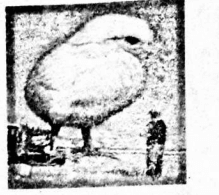
Which principle of art has not been considered while painting the picture above?- Shape
- Balance
- Proportion
- Paper layout
- The following are ways that one can use to decorate a book jacket. Which one is not?
- Applique
- Painting
- Block printing
- Incising
- Which is the first step done while decorating a fabric using tie and dye method after collecting all the materials needed?
- Tie the fabric according to your pattern
- Wash the fabric to remove starch and dirt
- Prepare a dye bath
- Dry the fabric under a shade
- A finishing technique in basketry where you stitch a cloth along the edges is known as
- moulding
- cutting
- tucking
- binding
- What does overlapping of pictures in a montage help to create?
- Balance
- Space
- Texture
- Depth
- Name the tool shown below
- Palette
- Brush
- Easel
- Paper cutter
MUSIC
- A group of three performers who are singing together is referred to as ______________________.
- trio
- duet
- quartet
- solo
- Verse 3 of the East African anthem begins with the words ____________________-
- Natujenge taifa letu
- Uzalendo pia mshikamano
- Amkeni ndugu zetu
- Viwandani na hata mashambani
- Which of the following is an African wind instrument?
- Chivoti
- Kayamba
- Maracas
- Wandindi
- When playing the descant recorder the following are correct techniques except
- avoid blowing too hard
- holding with the right hand up and left hand lower
- avoid covering unnecessary holes
- remembering to tongue appropriately
- When performing music the word tempo refer to
- articulation
- softness of the song
- type of song
- speed of the sung
- The two musical notes shown here are called ______________ and ________________respectively
- semibreve and minim
- crotched and quaver
- minum and sembreve
- crotchet and minum
- Which of these statements about an art song not true? Itisa type of song
- that is traditional
- that is arranged for solo or choral performance
- that is usually accompanied by a musical instrument
- that is usually sung in European languages only
- Which of these is not necessary to observe when singing a duet?
- Observe correct rhythm
- Sing with a smile always
- Keep the tempo
- Sing at the right pitch
- The correct way to perform a folk song is to
- sing in the local language
- sing in either English or Kiswahili only
- accompany singing with a good guitar or piano
- sing without minding about appropriate gestures and expressions
- The part of a fiddle that makes the sound louder is the
- bridge
- arm
- string
- resonator
SOCIAL STUDIES
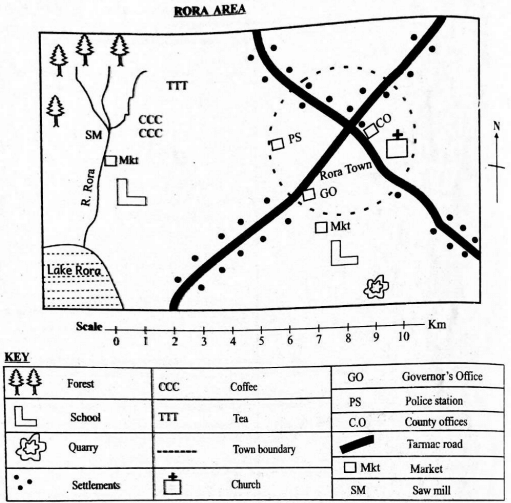
Study the map of Rora area and answer questions 21-25.
- What is the direction of the forest from the quarry?
- South East
- South West
- North West
- North East
- The climate to the North Western region of Rora area is
- hot and wet
- cool and wet
- cool and dry
- hot and dry
- The type of settlement in Rora area is
- linear
- scattered
- nucleated
- sparse
- The government wants to develop a project in Rora area. Which one of the following will be given the first priority?
- School
- Church
- Hospital
- Road
- The elected head of Rora area is a
- governor
- chief
- senator
- County commissioner
- The correct position of Eastern Africa is
- Latitudes 22°N and 12°S, Longitudes 22°E and 52°E
- Longitudes 17°W and 52°E, Latitudes 37°N and 35's
- Longitudes 34°E and 42°E, Latitudes 5°N and 5°S
- Longitudes 23°W and 52°E, Latitudes 17°N and 52°S
- The equator passes through these three countries of Eastern Africa. Which one is not?
- Uganda
- Kenya
- Somalia
- Tanzania
- Grade six learners went for an Educational trip to lake Victoria. After the trip the learners asked the teacher to help them identify the type of lake they visited. The correct answer was
- crater lake
- lava dammed lake
- downwarped lake
- tarn lake
Use the diagram below to answer questions 29 and 30

- The feature above was formed through the process of
- volcanicity
- erosion
- faulting
- folding
- Identify a mountain that was not formed through the process above among the following
- Mt. Ruwenzori
- Mt. Meru
- Mt. Usambara
- Danakil Alps
- Which one of the following historic built environments is not correctly matched with the country it is found?
- Namugongo Shrine - Tanzania
- Kigali Genocide Memorial - Rwanda
- Fort jesus - Kenya
- Roman Kiosk - Sudan
- Ali a grade six learner in Pahali primary school was asked by his teacher to state the importance of historic built environment. Which one was not?
- Creates a sense of belonging
- Is a source of income
- Creates jobs for many people
- Source of medicine
- Population distribution is determined by three of the following factors. Which one is not?
- Climate
- Soil fertility
- Security
- Longitudes
Use the map of Eastern Africa below to answer numbers 34 and 35
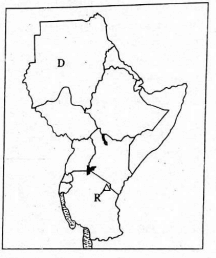
- The country marked D has its capital city in
- Adis Ababa
- Khartoum
- Juba
- Mogadishu
- The mountain marked R is
- Mt Kenya
- Mt. Meru
- Mt. Kilimanjaro
- Mt. Elgon
SECTION A:
CHRISTIAN RELIGIOUS EDUCATION
- While nurturing our talents, we should posses all the following values except
- integrity
- unity
- responsibility
- greed
- Grade six learners in Kima primary school were asked to state positive ways of spending their leisure time. Who among them did not give the correct way?
- Mori - Visiting the sick
- Tom - Helping his grandmother to fetch water
- Elizabeth - Visiting children's home
- Wesley - Gossiping
- Why is the Bible refered to as the word of God?
- It was written by people inspired by the Holyspirit of God
- It was written by the patriachs
- It was written by God
- It was translated in local languages
- The first four books of the old Testament of the Bible were written by
- Moses
- David
- Abraham
- Solomon
- The commandment that teaches on respect for marriage is
- Do not commit murder
- Do not steal
- Do not commit adultery
- Do not covet
- Mary, a rich woman in your village has been helping needy children in paying their school fees. Which fruit of the Holy spirit does she possess?
- Kindness
- Self control
- Faithfulness
- Joy
- Samson killed a thousand men with a jawbone at a place called
- Lehi
- Bethel
- Siloam
- Peniel
- Who among the following prophets recovered an axe-head from a river?
- Prophet Elisha
- Prophet Elijah
- Prophet Samuel
- Prophet Nathan
- ...... "Let me go, daylight is coming," Genesis 32:26. These words were said by
- God
- Jacob
- Angel
- Isaac
- Jesus chose the first four disciples when they were fishing. Who among the following was not among them?
- Matthew
- John
- James
- Peter
- Nyakundi, a C.R.E teacher asked Grade six learners to identify ways of taking care of God's creation. Who gave a wrong answer?
- Mary: Planting trees where they do not exist
- Agnes: Cleaning market places
- Joseph: Dumping trash on the roadside
- Peter: Taking care of wildlife
- Responsible boy - girl relationship involves all the following except
- playing together
- learning together
- eating together
- engaging in sex
- ...If you are the son of God throw yourself down and the angels will get hold of you before falling down." These words were said to Jesus during his
- baptism
- temptation
- trial
- arrest
- The Roman officer's servant was healed by Jesus from a distance. This was because of
- his master's faith
- the servant's faith
- Jesus' mercy
- the position of the master
- On his way to school, James found a blind man who wanted to cross the road. As a Christian, what should he do?
- Hold his hand and help him cross the road
- Mind his business not to talk to strangers
- Call the police
- Go to school and inform the class teacher
SECTION A:
ISLAMIC RELIGIOUS EDUCATION
- Which of the following surahs are read for protection?
- Naas and Falaq
- Falaq and Ikhlas
- Maun and Naas
- Nasr and Asr
- Ruwayda a grade six learner found her friends backbiting their class teacher. Which surah should she ask them to read?
- Maun
- Humaza
- Assr
- Fiil
- Muslims are encouraged to practice patience in which surah?
- Fatiha
- Humaza
- Asr
- Falaq
- Which surah encourages Muslims to be kind to orphans?
- Fjil
- Takathur
- Zilzalah
- Maun
- Grade 6 learners were asked by their teacher to research on the episode of the elephant. Which surah would you advise them to use?
- Humaza
- Ikhlas
- Bayyinah
- Fiil
- The first month on the Islamic calender is
- Ramadhan
- Rajab
- Muharram
- Dhul-Hijjah
- Four learners of Grade 6 were asked to name one item that is haram for a Muslim man to wear. Who among them was right?
- Abdul Malik - Wool
- Aysha - Gold
- Ziana - Leather belt
- Halima - Kanzu
- How many fardh salat should a Muslim perform in a day?
- Five
- Four
- Three
- Ten
- The first man to be created by Allah (S.W.T) was known as
- Adam
- Hawa
- Issa
- Muhammad
- Who was the wife of Nabii Adam?
- Aisha
- Hawa
- Khadijah
- Asiya
- When Faraj came to school, be found all his classmates fasting. Which month was this likely to be?
- Dhul-Hijjah
- Muharram
- Ramadhan
- Al-Khaaliq
- When people of Nabii Musa were living in this world, they used to read a book called
- Injil
- Zabur
- Taurat
- Suhuf
- Which attribute of Allah means the forgiver?
- Al-Malik
- Al- Ghaffar
- Ar- Rahman
- Al-Khaaliq
- How many days did Allah (S.W.T) take to create the world?
- Six
- Seven
- Five
- Three
- Which city is the Kaabah found?
- Madina
- Taif
- Makkah
- Kufa
MARKING SCHEME
ART & CRAFT
- C
- A
- A
- B
- C
- D
- B
- D
- D
- A
MUSIC
- A
- D
- A
- B
- D
- D
- D
- B
- A
- D
SOCIAL STUDIES
- C
- B
- A
- C
- A
- A
- D
- C
- C
- B
- A
- D
- D
- B
- C
C.R.E
- D
- D
- A
- A
- C
- A
- A
- A
- C
- A
- C
- D
- B
- A
- A
I.R.E
- A
- B
- C
- D
- D
- C
- B
- A
- A
- B
- C
- C
- B
- A
- C
Creative Arts & Social Studies Questions and Answers - Grade 6 End Term 1 Exams 2023 Set 2
CREATIVE ARTS AND SOCIAL STUDIES
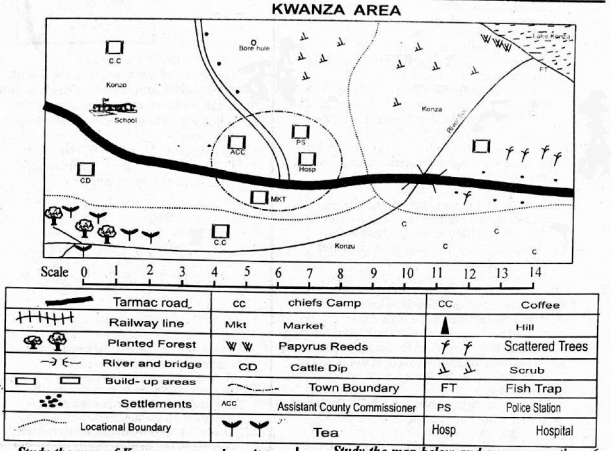
Study the map of Kwanza area and use it to answer questions 1 - 5.
- Which one of the following pairs of crops are grow in Kwanza area?
- Rice and tea
- Tea and coffee
- Sisal and cotton
- Coffee and Sugarcane.
- The population of Kwanza area can be described as
- dense
- scattered
- sparse
- nuclear.
- What is the direction of the borehole from the market in Kwanza area?
- North
- South
- North East
- South West
- What is the general flow of river Soi in Kwanza area?
- East
- South West
- North East
- South.
- The climate in Konzu location can be described as
- cool and wet
- cool and dry
- hot and wet
- hot and dry.
Study the map below and answer questions 6 to 8.
- What is the capital city of the country labelled Q?
- Asmara
- Khartoum
- Kampala
- Zanzibar.
- The vegetation found in the area marked T is
- Sub-tropical
- Mountain
- Desert
- Equatorial.
- The mountain marked G is
- Mt. Kenya
- Mt. Elgon
- Mt. Ruwenzori
- Mt. Gimbala.
- Which of the following is not an example of a historic built environment?
- Jomo Kenyatta statue in Nairobi.
- Bombolulu cultural centre in Mombasa.
- Kisumu museum in Kisumu.
- Moi International Airport in Mombasa.
- Which one of the groups is made up of Bantus only?
- Basoga, Hehe, Pare.
- Alur, Nandi, Sebei.
- Borana, Tutsi, Adere.
- Amhara, Tigre, Falasha.
- Which one following historic built environments is wrongly matched with the country where it is found?
- John Garang Mausoleum - South Sudan
- Independence monument - Burundi
- St. Francis of Asisi monument - Kenya
- The people's Palace - Djibouti
- Which one of the following is a reason for the migration and settlement of the Nilotes language groups in Eastern Africa?
- To spread Islam.
- Moving away from drought and hunger.
- Looking for pasture for their livestock.
- Looking for fertile land to grow crops.
- Which of the following factors does not influence population distribution?
- Relief
- Pests and diseases
- Insecurity
- Sunshine.
- Which one of the following aspects of our culture should not to be preserved?
- Raids.
- Traditional foods.
- Wrestling.
- Traditional attires.
- Which one of the following is not a benefit of collaboration between school and the community?
- Community members get jobs in the school.
- The school admits pupils from the community.
- The pupils work in the community farms.
- The school get learning materials from the community.
- Purity listed materials she would use to make a mat. Which of the following is a man-made material?
- Raffia
- Acrylic yarn
- Reeds
- Sisal fibre.
- Grace mounted the artwork below ready for an exhibition.
The technique used to mount the artwork above is- window mounting
- trimming technique
- pasting technique
- sticking technique.
- Jonathan mixed equal amounts of red and blue colours. Wha colour did he get?
- Green
- Yellow
- Orange
- Purple.
- Rebecca Saw the pottery item below at an artworkshop.
The form above is called a- cylindrical form
- conical form
- pyramidal form
- triangular form.
- Sarah made her pots. Which one of the following techniques can she use to decorate her items?
- Kneading
- Thonging
- Incising
- Splitting.
- Alex drew the figure below.
The colour in the part labelled R can be created by mixing- blue with red proportionality
- green and yellow proportionality
- red and orange proportionality
- blue with purple proportionality.
- Grade 5 pupils made the item below.
Which one of the following techniques were they not likely to use to decorate the item?- Smoking
- Embedding
- Incising
- Texturing
- Linet was making improvised crayons using bee wax. Which of the following reasons explains why she used two containers when melting the wax? To
- melt slowly
- ensure consistency in melting
- prevent fire accidents since wax is flammable
- enable the colour to mix well.
- Priscah was planning an art exhibition. Which of the following factors was she not likely to consider in the preparation?
- Proper use of space.
- Colour contrast of the background.
- Background music.
- Placement of artwork.
- During a photography lesson, Grade 6 learners were learning about principles of photography. Which one of the following were they not likely to discuss?
- View point
- Value
- Lighting
- Centre of interest.
- Grade six learners were asked to write down different parts of a fiddle and their functions. Which one of the following parts is correctly matched with its function?
- String: Vibrates to produce sound.
- Bridge: Used for tightening the string.
- Tuning peg: Amplifies the sound.
- Bow: Transfers sound to the resonator.
- Grade 4 learners wrote down the importance of folk songs as below. Which one of the following statements is false?
- Makes us appreciate other people's cultures.
- It is a source of livelihood.
- Promotes unity among various people.
- It leads to unfair competition between communities.
- Grade six learners visited the Bomas of Kenya to watch the performance of folk songs from various communities. During the performance of the Maasai traditional dance, the dancers got into intense dancing session marked with louder playing of instruments and more vigorous dancing. This feature of a folk song is known as
- mood
- climax
- musical speed
- structure.
- Some learners listed down the importance of caring for the musical instruments. Which one of the following statements is false regarding taking care of instruments?
- Saves time used in making new investments.
- Saves money used to buy new instruments.
- Saves resources used to make new instruments.
- Makes instruments to fade well.
- Grade 5 learners were asked to name musical instruments from different communities in Kenya. Four of the learners gave the following answers. Who among them gave an example of melodic percussion instrument?
- Akelo: Guitar
- Wacike: Wandindi
- Naliaka: Drum
- Wambui: Adongo
Grade six learners visited a music store. They saw the musical instrument shown below. Use it to answer questions 21-22.
- The instrument shown above is known as
- Fiddle
- Traditional guitar
- Abu
- Coro
- The part labelled X is called
- bridge
- drum
- resonator
- amplifier.
- Kariuki was asked to write down values mentioned in the East African community Anthem. He wrote three of the following values except
- patriotism
- nepotism
- unity
- peace.
- Which of the following is not a type of a song?
- Patriotic
- Lullaby.
- Famous
- Popular
- Abigael was asked to clap the rhythm below and then write the corresponding French rhythm. Which of the rhythm matches the clapping?
- taa-aa-aa
- taa-tate-taa
- tate taa-tate
- taa-ta-te-ta-te
PART 2: Choose a section you have prepared for. Each section is 10 marks
CHRISTIAN RELIGIOUS EDUCATION
- Ann has a talent in sewing. During her leisure time, she was seen trying to make new designs from the internet. Which value does she have that can improve her talent?
- Respect
- Integrity
- Responsibility
- Honesty.
- Ouma's marriage was conducted at the county Commissioner's office. They were then given a certificate to sign. This type of marriage is. called
- religious
- civil
- customary
- traditional.
- According to Genesis 2:20- 24, God created a woman inorder to
- form a family with a man
- cook for the man
- be a man's helper
- bear children for the man.
- You have been asked to address a community that still practices early marriages. Which of the following will you not mention as a reason why early marriages should be discouraged? They
- violate children's rights
- may lead to successful life
- may cause death
- lower one's self-esteem.
- A teacher asked grade 5 learners to name different forms of leisure. They stated what they do as follows:
Tom - Reading storybooks
Mercy - Swimming in the pool.
Ted-Riding his bike.
Jack - Watching a movie.
Who among the following pupils did not mention passive leisure activities?- Tom and Mercy.
- Ted and Jack.
- Tom and Jack.
- Mercy and Ted.
- Which of the following best gives an opinion of rest according to the Bible? We should rest
- after completing our work
- when we feel tired
- when we are doing nothing
- because it makes God happy.
- The Bible is an inspired word of God. Jane researched the meaning of the word 'inspire'. Which one of the following is the best meaning of inspire? To
- make someone feel that she wants to do something
- discourage someone from doing something
- make someone lose confidence in self
- give someone an idea of doing something.
- Who among the following authors is wrongly matched with the books they wrote?
- David Psalms
- Paul - Colossians
- Solomon - Proverbs
- Moses - Kings
- The commandment that teaches the value of contentment is the _________________ commandment.
- 2nd
- 5th
- 4th
- 10th
- Samson loves his nation so much that he agreed to be handed over to the enemies to save his country. Which quality best describes his behaviour?
- Faith
- Courage
- Patriotism
- Honesty.
- The prophets who complained to Elisha were experiencing which problem?
- Lack of food.
- Their land was small.
- They had no water.
- They had disagreements.
- "I won't let you go unless you bless me." Who among the following said these words?
- David
- Saul
- Angel
- Jacob.
- Today, God calls people to serve Him through different ways. Which of the following is not amongst them? Through
- sacrifices
- visions
- dreams
- preaching.
- John and Jeff were asked the lessons they learn from the call of the first four disciples. Which of the following is not correct?
- We should be obedient to God's call.
- We should trust in Jesus.
- We should change our lifestyle when called by God.
- God chooses people to call for His service.
- "I will give you all these if you bow down and worship me.'
This was Jesus' __________________________ temptation.- 2nd
- 1st
- 3rd
- 4th
ISLAMIC RELIGIOUS EDUCATION
- Surahs condems many things. Which one of the following surahs condemns backbiting?
- Kawthar
- Humaza
- Zilzala
- Aadiyat.
- Grade 6 learners were discussing different ways of using their time well. Which surah were they mostly likely to refer to?
- Asr
- Fatiha
- Lahab
- Naas
- Complete the surah below.
"Latarawunnal al..........- Naiim
- Yaqiin
- Jahiim
- Maqaabir.
- Which one of the following is not a teaching of suratul Qaariah?
- Allah is the best of the judges.
- We should do good and avoid evil.
- The surah talks about the day of judgment.
- The surah teaches us about tawheed.
- Grade 6 learners were discussing about a hadith on purity of action. They concluded that Allah looks at our
- faces and wealth
- hearts and wealth
- deeds and hearts
- deeds and faces.
- Amina was given an assignment on qualities of a female's dress. Which of the following responses was wrong? The dress should
- cover what is between the navel and knees
- long and loose
- not be transparent
- cover the entire body.
- Which one of following is the third pillar of Iman? Belief in
- Allah
- His prophets
- the last day
- His books.
- Who is a muttaqin?
- A person who prays five times a day.
- A person who relies on Allah.
- God fearing person.
- Imam of a mosque.
- Grade 6 learners were discussing about occasions on which tawba is not accepted. Who among the following gave the correct answer?
- Yusuf- When the sun rises from the west.
- Khalid -When the sun rises from the east.
- Sofia - On Friday.
- Mariam - When one is sick.
- Sacrifice made during Eidul Adh-ha always reminds us of nabii
- Yusuf
- Yunus
- Ibrahim
- Musa.
- Zakah is a pillar of Islam. Who among the following is not a recipient of Zakah?
- Widows.
- Travelers.
- Poor.
- Zakat collectors.
- Which one of the following is a form continuous charity?
- Feeding a hungry person.
- Leading a prayer in the mosque.
- Planting a tree.
- Removing harmful things on the road.
- How can a Muslim girl apply the teachings of hadith on dressing in her life?
- Wearing mini-skirt.
- Copying dress of non-Muslims.
- Wearing tight clothing.
- Wearing loose and long dressing.
- On the day of Qiyama, we will be asked four questions concerning the following except
- wealth
- youth
- age
- children.
- Which Prophet of Allah was tempted by a woman but Allah protected him?
- Musa
- Yusuf
- Issa
- Nuh.
MARKING SCHEME
SOCIAL STUDIES
- B
- C
- A
- C
- A
- A
- C
- B
- D
- A
- C
- C
- D
- A
- C
- B
- A
- D
- C
- C
- D
- D
- C
- C
- B
- A
- D
- B
- D
- D
- A
- C
- B
- C
- D
CRE
- B
- B
- C
- B
- D
- A
- A
- D
- D
- C
- B
- D
- A
- D
- A
IRE
- B
- A
- C
- D
- C
- A
- D
- C
- A
- C
- A
- C
- D
- D
- B
Creative Arts & Social Studies Questions and Answers - Grade 6 Mid Term 1 Exams 2023 Set 7
ART AND CRAFT.
- The following are material used when painting imaginative composition except
- paints
- painting surfaces
- paint brush
- water
- The wristband below can be made using the following items except
- leather
- metal
- thread
- clay
- A single unit of a design which is repeated on a surface to make a pattern is called
- motif
- calligraphy
- pasting
- design
- Paper flowers can be made using the following materials apart from?
- Serviette
- Tissue
- Origami paper
- Plastic
- The following are qualities of materials used during coil and stitch technique except
- flexible
- easy to destroy
- long lasting
- easy to clean
- The picture below used in carving is called
- mallet
- chisels
- carving knife
- gouge
- A technique used to create a feeling of movement by flipping drawn or painted images on a series
of frames of a high or slow speed is _______________________- 2D animation
- 3D animation
- 4D animation
- 1D animation
- The material below is used for ______________________________ pictures
- loosening
- sticking
- decorating
- drawing
- The technique used to create pictorial composition by cutting, arranging and pasting related pictures cut-out from old magazine and newspaper to create a new image is
- painting
- shading
- drawing
- montage
- The tools below are used for painting except
- brush
- bottle
- sponges
- spatulas
MUSIC.
- When all the holes are covered on the descant recorder, ___________________________ is produced.
- Note E
- Note C
- Note F
- Note B
- During music festivals most of the string instrument are played by ______________________________
- pressing
- blowing
- hitting
- plucking
- The picture below is called
- chivoti
- mulele
- nzumari
- abu
- The following are things done to clean a string instrument except
- dip a piece of cloth in a soapy water
- squeeze out as much water as possible
- wipe every part of the instrument
- dry close to very strong heat
- When playing a descant recorder, fingers should move ______________________
- together
- seperately
- frequently
- slowly
- An element of music that relates to the volume of sound and can either be long or soft is known as
- tempo
- rhythm
- pitch
- dynamics
- The hand sign below is a solfa sign for
- Doh
- Mih
- Reh
- Soh
- Which one of the following is an example of non-melodic percussion instruments
- drum
- adongo
- kayamba
- jingles
- Religious songs are also called _________________________songs.
- folk
- topical
- sacred
- patrotic
- In a song the mood can be shown through all of the following except
- facial expression
- instruments
- gesture
- tempo
SOCIAL STUDIES.
- Three of the following are ways African Traditional Education was passed. Which one was not. Through
- proverbs and riddles
- syllabus coverage
- observation
- apprenticeship
- The following are duties of the headteacher. Which one is not. He/she
- attends Board of Management meeting
- meets with the learners
- prepares school timetable
- meet teachers and assign them duties
- Which one of the following factor does not favour dairy farming in Kenyan?
- High and reliable rainfall throught the year
- Good transport system for the produce
- Ready market for selling milk and milk products
- Cheap importation of dairy products from other countries
- Which one of the following minerals is used in production of glass
- diatomite
- soda ash
- limestone
- petroluem
- Three of the following are examples of relief features in Eastern Africa except
- Ocean
- Mountains
- Plains
- Valleys
- The Grade six learners of Ngware Primary school were studying modern forms of transport in Kenya. Identify the forms of transport that can be used to transport oil products from Mombasa to Eldoret
- Railway
- Road
- Air
- Pipeline
- Which one of the following is not an importance of early forms of governance in Kenya
- It promoted respect among communities and their leaders
- It promotes democracy in the country
- It allowed only rich persons to continue with the leadership of the community
- It promoted goods ways of solving disputes among communities
- Which one of the following is not a national symbols of unity in Kenya
- The National Flag
- The coat of arms
- The cabinate secretaries
- The National Anthem
- Three of the following are the importance of human rights in Kenya. Which one should be encourage it literacy?
- Health care
- Education for all
- Respect life
- Right to fair trials
- Which one of the following does not form the cabinent?
- The speaker
- The president
- The Deputy President
- The attorney General
- The following are the major lines of latitude except
- The equator
- Antarctic circle
- Greenwich meridian
- Tropic of Capricon
Use the map of Eastern Africa to answer question 32 - 34.
- Which one of the following countries does not border the lake marked L
- Mozambique
- Tanzania
- Malawi
- Burundi
- The communities that followed the route marked S were mainly
- livestock keeper
- traders
- cultivators
- fishermen
- Which one of the marked countries J, K, N and M is a landlocked country?
- J
- K
- N
- M
- The following are the descriptions of a relief feature in Eastern Africa
- Faults developed on the rocks
- The middle block sank and separated
- The layer of the earth on opposite sides were pulled apart
The above descriptions suits the formation of- block mountain
- volcanic mountain
- The Rift valley
- The formation warping lakes.
PART 11
CHRISTIAN RELIGIOUS EDUCATION
- State one way in which your class can conserve the environment in the school?
- Cutting down trees
- Scattering rubbish in the compound
- Watering trees
- Throwing garbage anywhere in the school
- One Saturday afternoon some of your friends from school were in different leisure activities as shown below:
Kingsley - watched a movie
Dilan - went fishing
James - visited an orphanage
Austine - read a story book
Who among your friends made the best use of the leisure time?- Dilan
- Kingsley
- Austine
- James
- The king of Israel who settled a dispute between two women, who were fighting over a baby was called?
- King Solomon
- King David
- King Ahab
- King Saul
- Three of the following are types of marriage which one is not?
- Civil
- Christian
- Customary
- Agape
- Which one of these gifts does a pastor or priest use on many occasions?
- Faith
- Working miracles
- Speaking in tongues
- Preaching
- _________________________ came to give us true happiness.
- Jesus
- Pastor
- John the baptist
- Prophet Elijah
- __________________________sinned against God and brought death to the world.
- Cain and Jezebel
- Cain and Abel
- Adam and Eve
- Isaac and Rebecca
- Why do we respect the sabbath day?
- God completed His work on the sabbath day
- We need rest
- It is a command from God
- It is day for leisure activities.
- Jesus was baptsied in river ___________________________
- Nile
- Jordan
- Tana
- Athi
- The first people to visit Jesus were the
- wisemen
- shepherds
- Angels
- Mary Magdalene and her friends
- Peter denied Jesus __________________________ times.
- three
- four
- one
- two
- Your deskmate John like boasting that he comes from a very rich family. Which Christian value does John lack?
- Kindness
- Humility
- Honesty
- Patience
- When learners of grade five class perform and finish the duties assigned to them by their teachers, they are learning to be?
- Servants
- Masters
- Industrious
- Responsible
- The books that were written by Paul in the New Testament are also known as
- Pentateuch
- Gospel
- Law
- Epistles
- A parable of Jesus which teaches Christians that Jesus came to seek and save the lost is parable of the
- lost sheep
- great banquets
- wedding feast
- yeast
PART 11
ISLAMIC RELIGIOUS EDUCATION
- The practices of truthfulness and patience are emphasized in Surah.
- Asr
- Humaza
- Alaq
- Fiyl
- Surah Al-Bayyinah teaches us on ____________________________principles of religion.
- 2
- 3
- 4
- 5
- Ar-Rahman is an attribute of Allah found in
- Surah An Naas
- Surah Al-Fatiha
- Surah Al-Falaq
- Surah Al-Kafirun
- Surah Al-Falaq talks about Allag (SWT) as the Lord of ________________________
- dawn
- mankind
- universe
- dinns
- Which of the following is true?
- An-Naas mean mankind.
- Surah An-Naas has seven verses
- An-Naas means Dawn
- An-Naas is protection
- Who ever is not thankful to parents is not thankful to ______________________
- Allah (SWT)
- Prophet (SAW)
- mother
- last day
- When a person dies, all his deed come to an end except
- a righteous child who prays for him
- his wealth
- his house
- his wives
- How many pillars of Islam are there in the Quran
- 4
- 5
- 6
- 3
- The holy Quran mentions. ________________________ prophets of Allah (SWT)
- 30
- 28
- 29
- 25
- Which one among the following people accompanied the prophet (SAW) in ne journey of Taif?
- Zaid bin Harith
- Abdallah bin Ubay
- Musabin Umeir
- Amir bin Khalid
- Which of the following pairs of angels of Allah consists the angels in harge of writing good. and bad deeds?
- Munkar and Malik
- Raqib and Atid
- Jibril and Izrail
- Israfil and Mikail
- How many arches were adviced to remain on top of Mt.Uhud?
- 40
- 70
- 50
- 69
- The attribute Alghafar means
- The provide
- The all seeing
- The forgiver
- The king
- The foster mother of prophet (SAW) was?
- Halima
- Amina
- Zuleikha
- Khadija
- The mother of prophet Ismail (A.S) was known as
- Sarah
- Hajar
- Maryam
- Zaynab
MARKING SCHEME
ART
- D
- D
- A
- D
- B
- C
- A
- B
- D
- B
MUSIC
- B
- D
- A
- D
- B
- D
- B
- B
- C
- D
SOCIAL
- C
- C
- D
- B
- A
- D
- C
- C
- B
- A
- C
- D
- B
- B
- C
CRE
- C
- D
- A
- D
- D
- A
- C
- C
- B
- B
- A
- B
- D
- D
- A
IRE
- A
- B
- B
- A
- A
- A
- A
- B
- D
- A
- B
- C
- C
- A
- B


